Category: Iraq
New statement from Jabhat al-Murābiṭīn in Iraq: "Formation of Jabhat al-Murābiṭīn in Iraq"

Click the following link for a safe PDF copy: Jabhat al-Murābiṭīn in Iraq — “Formation of Jabhat al-Murābiṭīn in Iraq”
__________
To inquire about a translation for this statement for a fee email: [email protected]
al-Furqān Media presents a new video message from the Islamic State of Iraq and al-Shām: "Epic Battles of Greater al-Anbār #2"
NOTE: Click here for the first part in this video series.
—
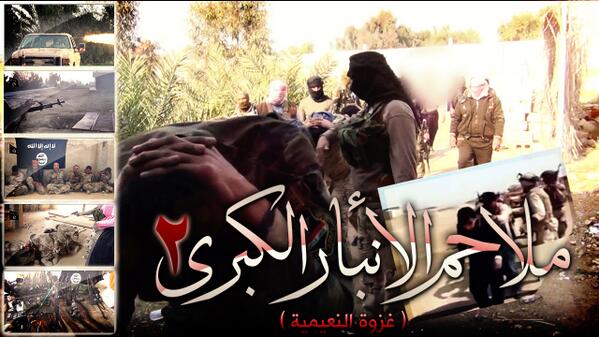
_________
To inquire about a translation for this audio message for a fee email: [email protected]
Hizballah Cavalcade: Selling Sectarianism: Shia Islamist Groups & Maliki’s Anbar Offensive
NOTE: For prior parts in the Hizballah Cavalcade series you can view an archive of it all here.
–
Selling Sectarianism: Shia Islamist Groups & Maliki’s Anbar Offensive
By Phillip Smyth
As the Iraqi government offensive in Anbar continues to engage Sunni groups which are protesting the government (some have now taken up arms against the government) and the Islamic State of Iraq and al-Sham (ISIS), sectarian messaging by Shia Islamist groups which support the government and its offensive has also increased.
Coming after the operation against jihadi militants on December 23, 2013 and following protests by Sunni groups (including a number of tribes), on December 25 Iraqi Prime Minister Nouri al-Maliki announced an offensive against ISIS and “armed groups” in Iraq’s Anbar province. The offensive has been controversial regionally and within Iraq, with some accusing Maliki of engaging in sectarian politics.[1] Analyst Charles Lister even called the coordinated offensive, “one move too far”.[2]
Sectarian language explaining the Iraqi government onslaught has been utilized by all sides. Even Nouri al-Maliki called the operations, “a fierce confrontation between the supporters of Hussain and the supporters of Yazid”.[3] Shia Islamist groups, including Iranian-backed and possibly those claiming to back Iraqi Shia cleric and political leader Muqtada al-Sadr, have taken the opportunity to issue statements, upload photos, and produce music in support for the Iraqi government’s operations.[4] For these groups, the offensive was viewed as a golden opportunity to demonstrate their importance to the Iraqi Shia community and to demonstrate they were assisting the fight against jihadi-type organizations. These groups also played upon sectarian sentiments to promote the Iraqi government’s operations and suggest that the Iraqi Army is a pro-Shia sectarian entity. There were also claims that some Iraqi Shia Islamist forces which had fought in Syria, returned to fight ISIS and other Sunni groups in Iraq.
Statements of Support
On December 28, Ahmed al-Alwani, a Sunni parliamentarian and protest leader, was arrested by Iraqi security forces. The raid against him resulted in the death of Alwani’s brother and a number of guards from his security profile.[5] Alwani was well-known for vitriolic anti-Shi’ite statements.[6] His arrest by Iraqi security forces was immediately praised by some Shia Islamist groups, particularly Asa’ib Ahl al-Haq, which praised the raid (see photos below). The day also saw a near simultaneous release of statements by Iranian-backed Shia Islamist organizations which are also fielding armed units in Syria.
Liwa’a Zulfiqar, a Syria-based Shia Islamist armed group, also announced its support for the Iraqi Army in its operations against ISIS and announced they would stand by them against, “racist Zionist terrorism”. This represents a continuance of the narrative that armed Shia Islamist groups (primarily backed by Iran) consider al-Qa’ida and its allied organizations as merely agents of Israel. On the same day, Kata’ib Sayyid al-Shuhada, released its second publicly available official communique. The statement stressed their support for the Iraqi Army’s fight in Anbar. Asa’ib Ahl al-Haq also issued their own messages of support for the offensive against ISIS.
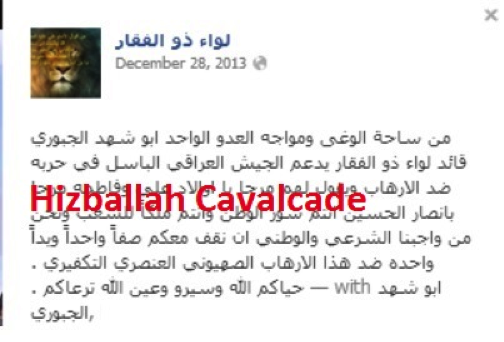
Figure 1: An announcement of support for the Iraqi Army’s efforts in Anbar from the official Liwa’a al-Zulfiqar Facebook page.
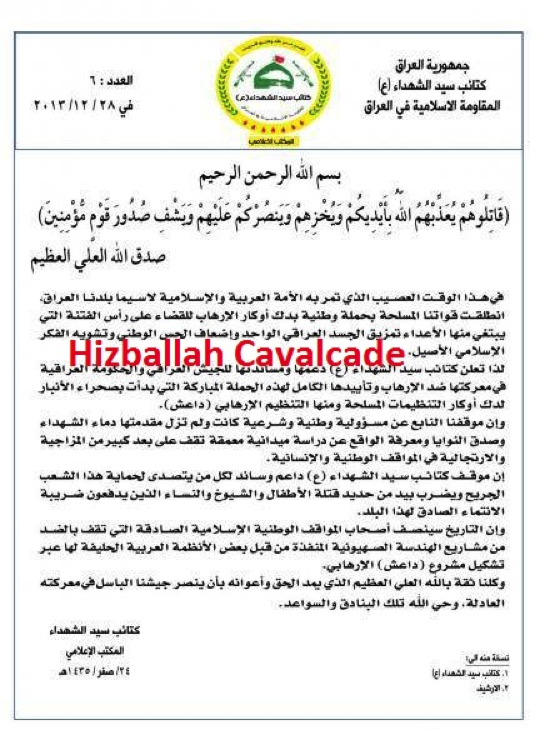
Figure 2: Kata’ib Sayyid al-Shuhada’s release in support of the Iraqi government’s offensive into Anbar.
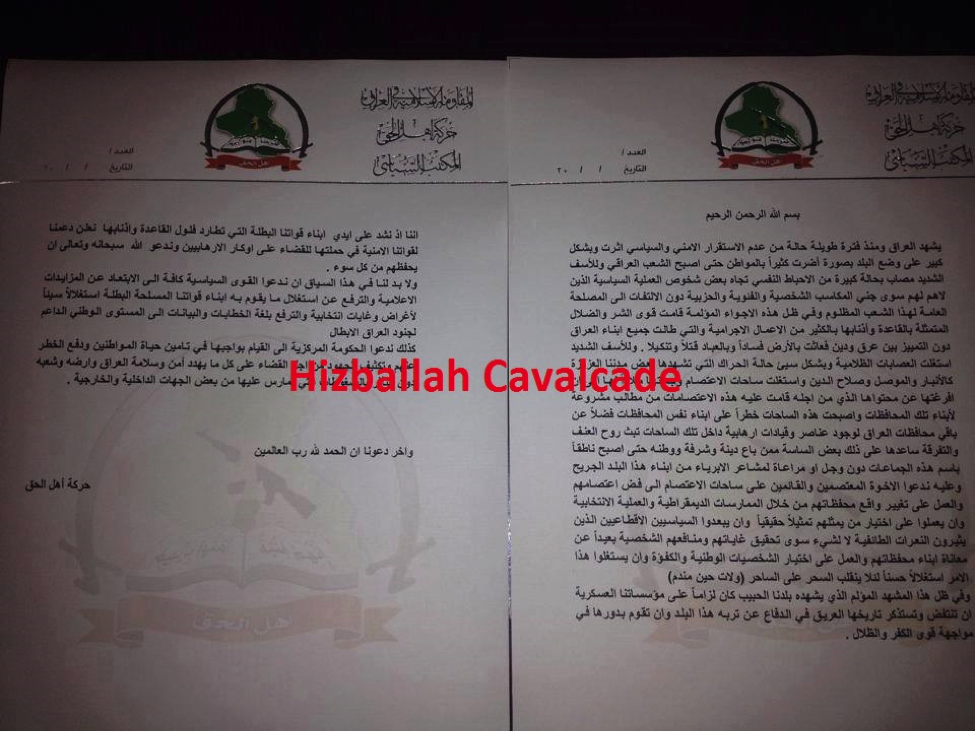
Figure 3: Asa’ib Ahl al-Haq’s statement about their support for the Iraqi government and military against ISIS and armed groups in the country.
Main Messaging Themes:
- National Institutions: Shia Islamist groups have claimed to fully support the Iraqi Army and present themselves as integral elements to the Iraqi military and police operations in Anbar. This theme coincides with other Iranian-backed organizations messaging, namely the narrative presented by Lebanese Hizballah and their claims of fully backing the Lebanese Armed Forces.[7]
- One Army, One Sect: Photos and statements implying the Iraqi military and police are engaging in the fight against ISIS to defend Shi’ism. These themes are also combined with photos claiming to show members of the military and/or police showing support for certain Shia political leaders and clerics. This sort of rhetoric had gone on since the spring of 2013 during the initial announcements of foreign Shia fighter involvement in Syria. In one May 2013 photo, a soldier reportedly from the Iraqi Army is shown holding a Shia religious banner on top of what is claimed to be an Iraqi military armored vehicle (see below).
- Two Fronts, One War: Tying the war in Syria to the fighting in Iraq involves extending the “Defense of the Sayyida Zaynab” (the defense of the Sayyida Zaynab shrine in southern Damascus is held as the reason for Shia Islamist fighters are in Syria) narrative which claims Shia Islamist armed groups are present in Syria to protect holy shrines/Shi’ism and stop jihadi-linked fighters. As a result, the engagements within Iraq which claim to also target ISIS and other organizations are grouped together as part of a unified effort to protect Shi’ism.
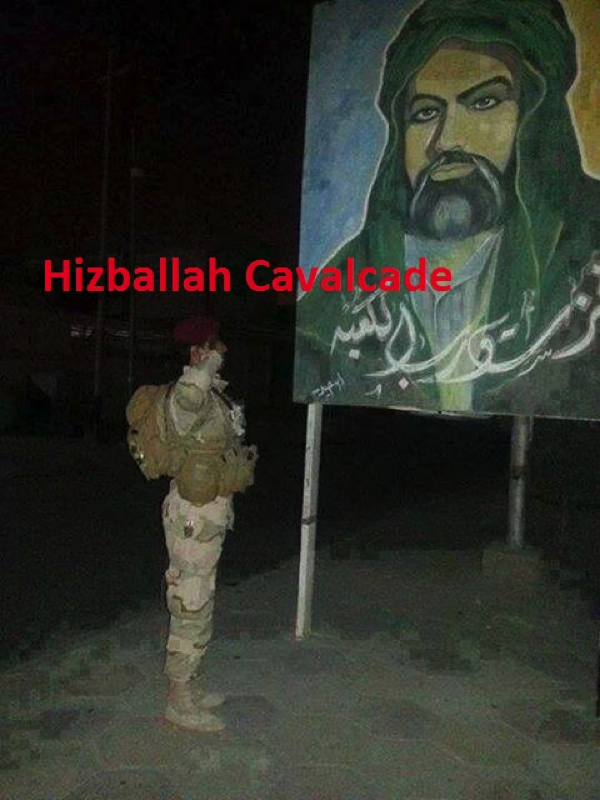
Figure 4: A photo uploaded in mid-January with the caption, “We will not be defeated”. The photo reportedly shows an Iraqi Army soldier saluting a Shia religious poster.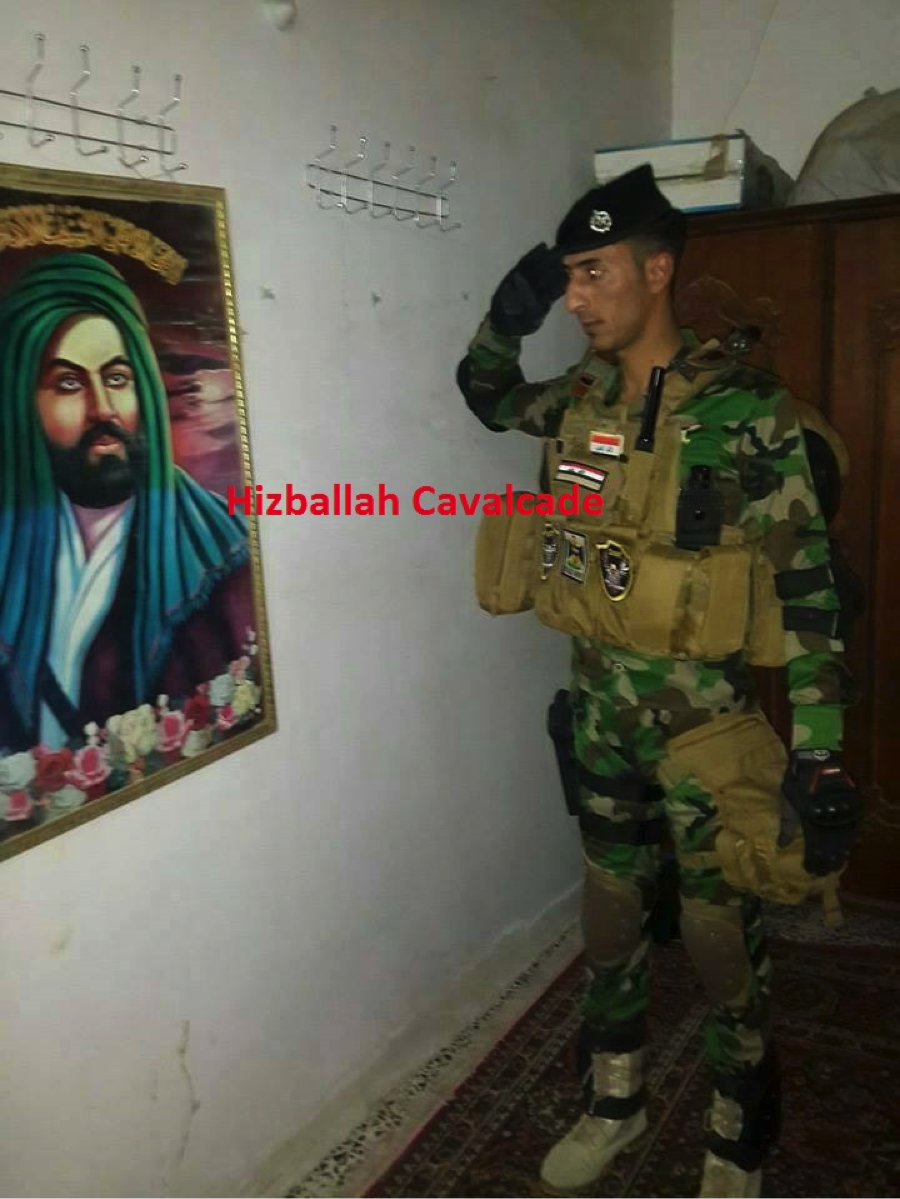
Figure 5: Photo claims to show an Iraqi soldier saluting a picture of martyred Shia leader, Imam Husayn. The photo was posted onto numerous social media pages catering to Shia Islamist fighters in Syria.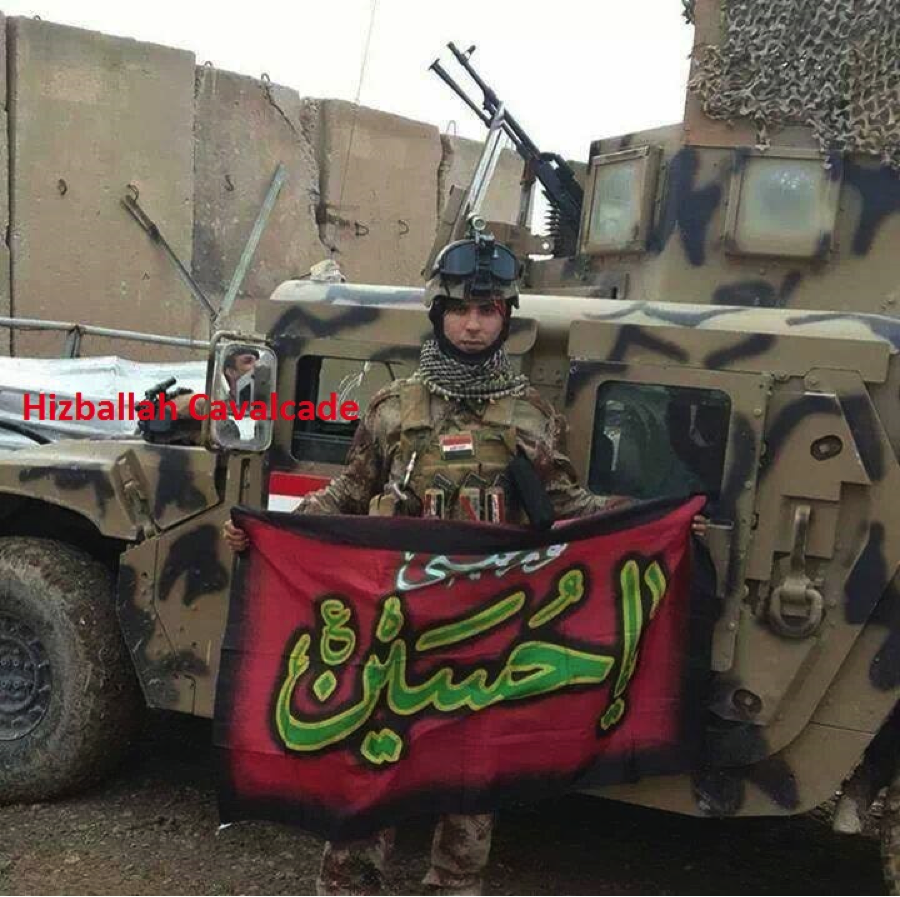
Figure 6: This photo claims to show an Iraqi soldier holding an Imam Husayn flag in front of an armored vehicle. The photo was widely circulated on Shia Islamist social media pages.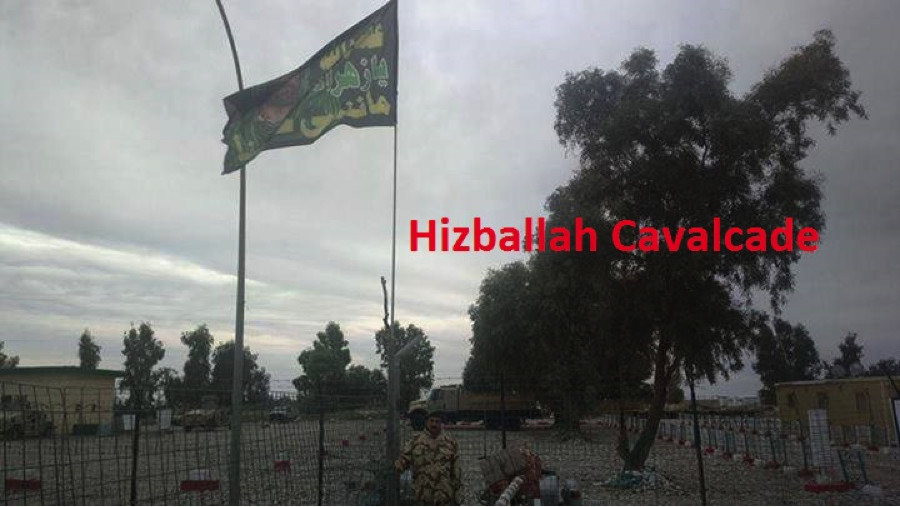
Figure 7: Photo purports to show an Iraqi soldier under a Shia banner following the, “Capture of Ramadi”. The photo was posted on Badr Organization and Asa’ib Ahl al-Haq social media pages.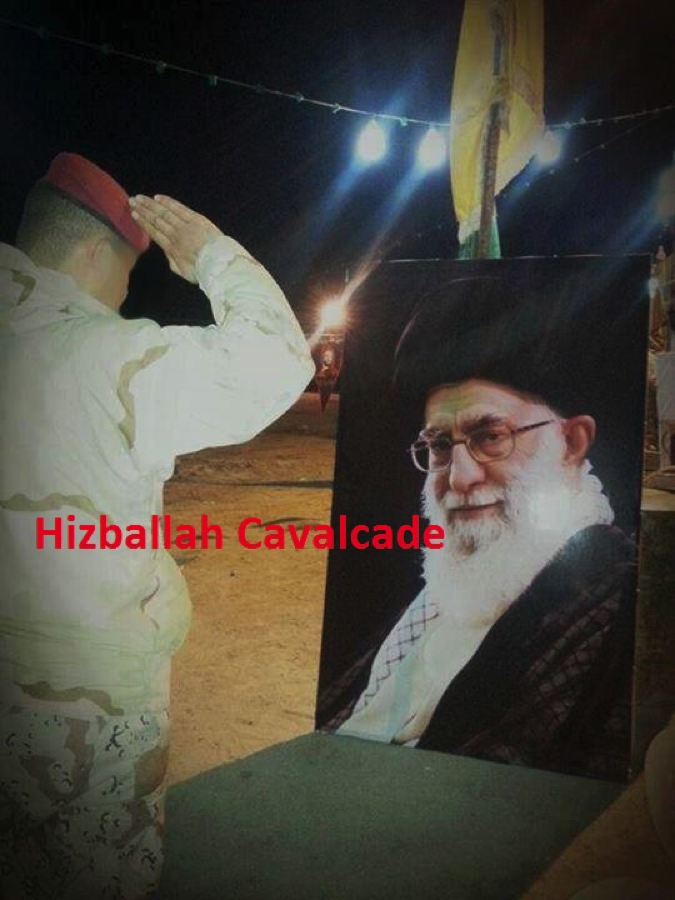
Figure 8: This photo claimed to show an Iraqi soldier saluting Iranian Supreme Leader Ayatollah Khamenei.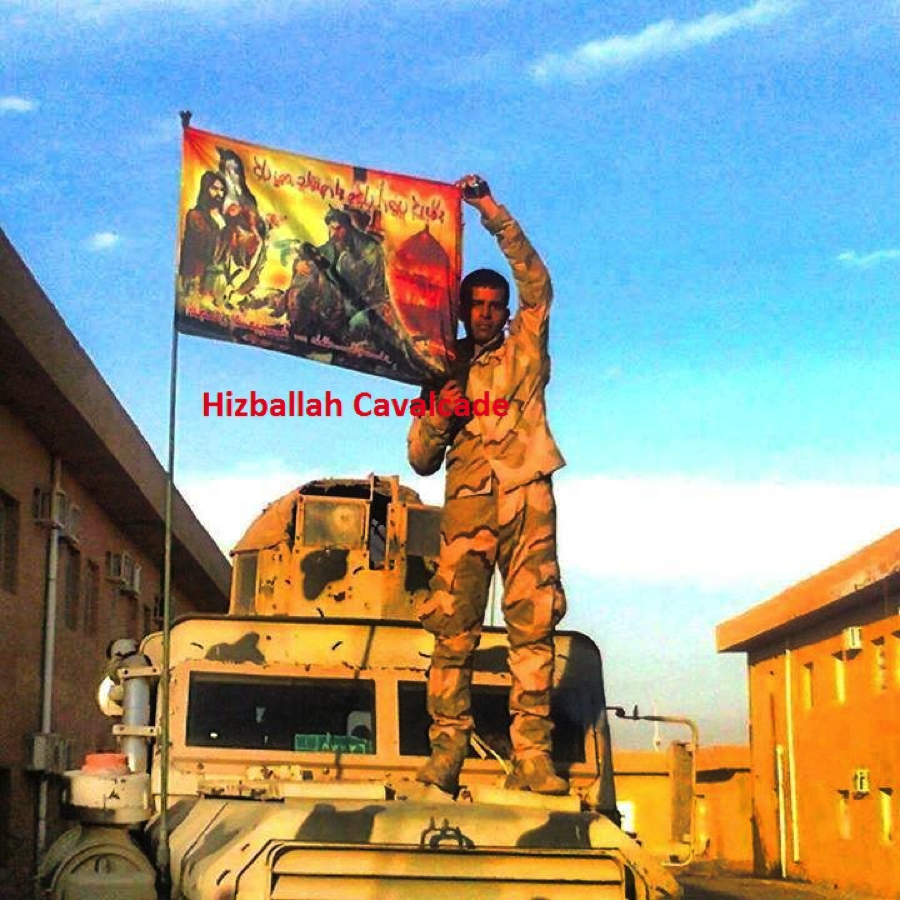
Figure 9: First uploaded to Shi’a Islamist social media in May 2013, this photo claims to show an Iraqi soldier atop an armored vehicle holding a Shi’a religious banner.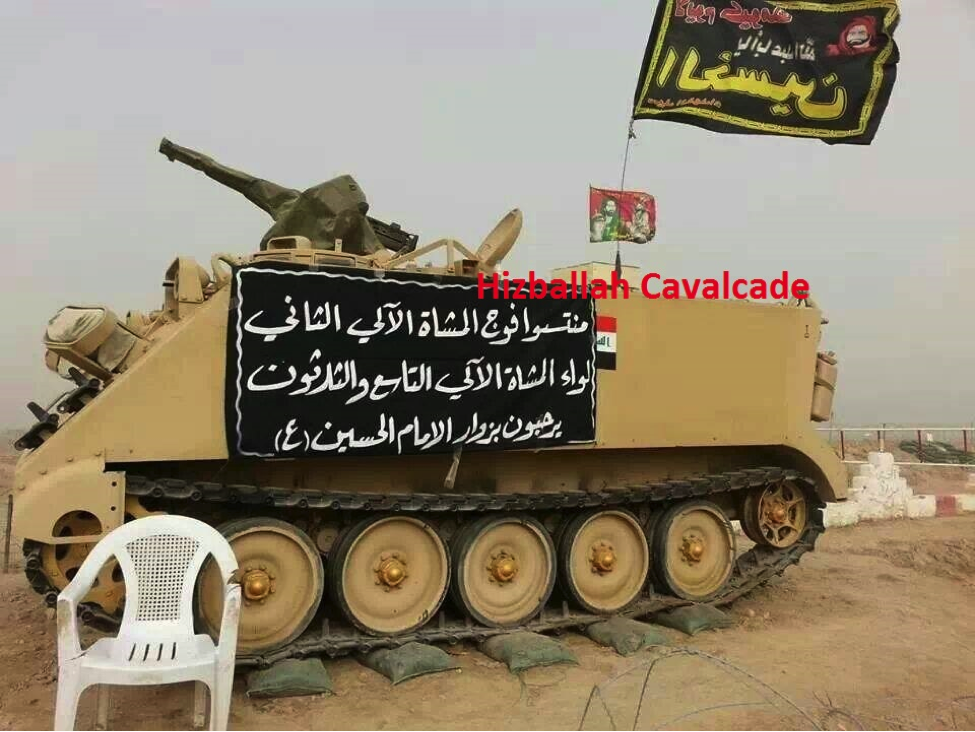
Figure 10: An Iraqi armored personnel carrier (APC) flying flags for Shia Imam Husayn with a sign partially reading, “Welcoming visitors to Imam Husayn [mosque and shrine in Karbala, Iraq]”. While the context of the photo is probably more innocuous—It is likely this APC was simply part of a guard set up in Karbala and was used to welcome pilgrims—ISIS/Sunni Islamist activists and Shia Islamist groups circulated the photograph as proof of the Iraqi Army’s sectarian loyalties.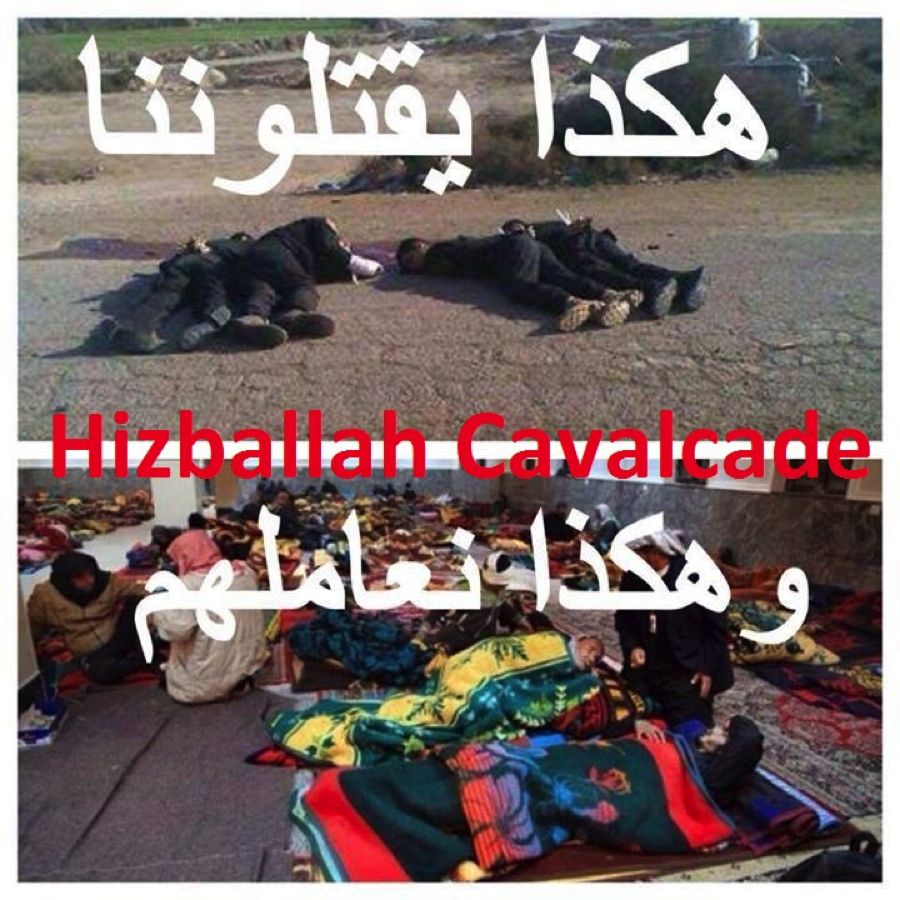
Figure 11: Top photo: “This is how they kill us”. Bottom photo: “And this is how we treat them”. The top picture shows Iraqi soldiers executed by ISIS. The bottom references reports of Shia Muslims taking in Sunni Muslim refugees from Anbar.[8] The photo was not widely distributed, but could be found on pages and profiles catering to Iranian-backed Shia Islamist organizations (mainly Asa’ib Ahl al-Haq).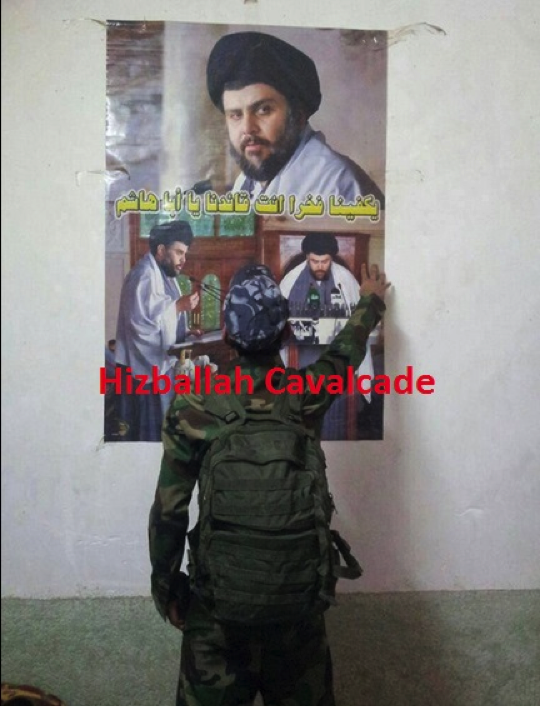
Figure 12: This photo, spread on Sadrist and Sadr-splinter group social media, claims to show an Iraqi soldier reaching out to a Muqtada al-Sadr poster.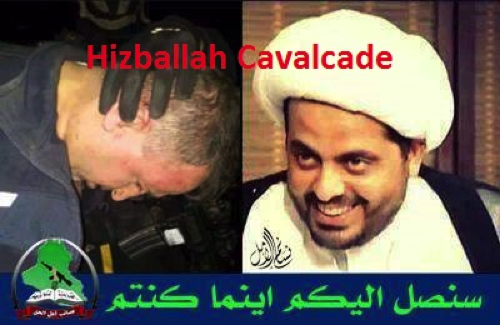
Figure 13: Asa’ib Ahl al-Haq leader Qais al-Khazali smiles (right) while Iraqi Sunni MP Ahmed al-Alwani is detained by Iraqi security forces (left).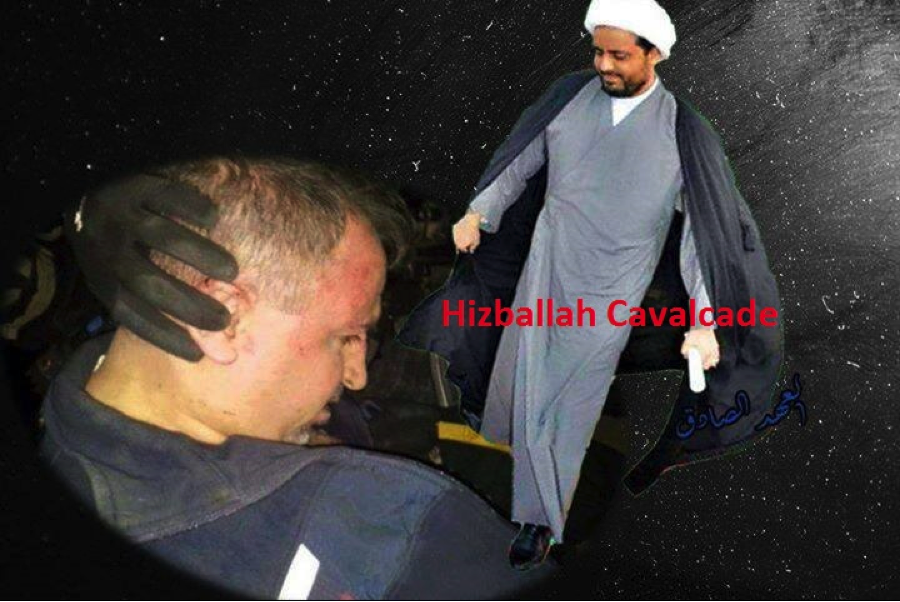
Figure 14: Qais al-Khazali is portrayed as walking on the captured Iraqi Sunni MP Alwani.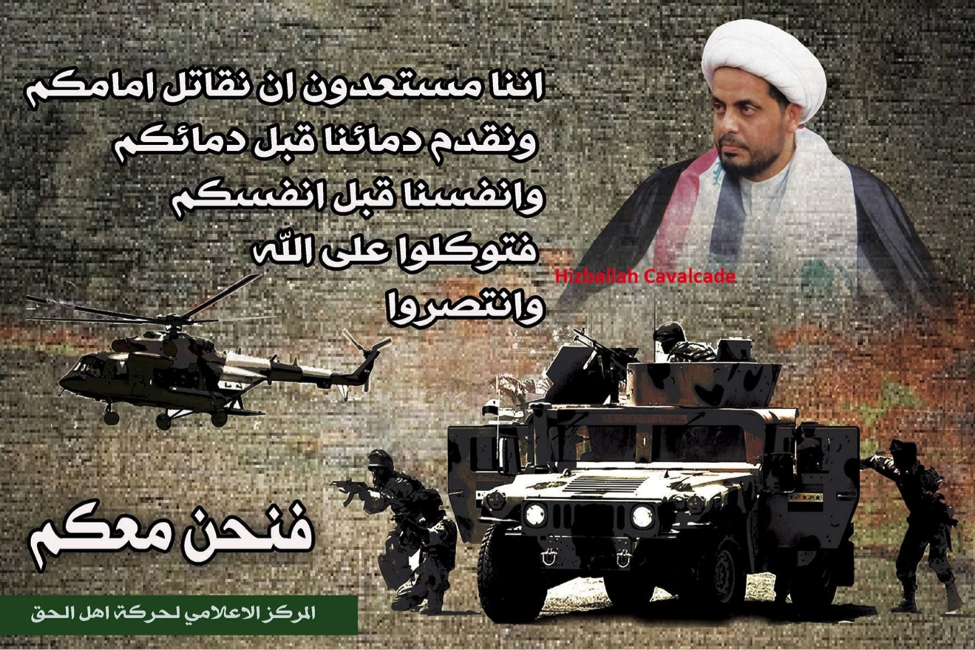
Figure 15: “Thus, we support you”. An AAH poster shows AAH leaer Qais al-Khazali looking down on Iraqi army soldiers and an Iraqi helicopter.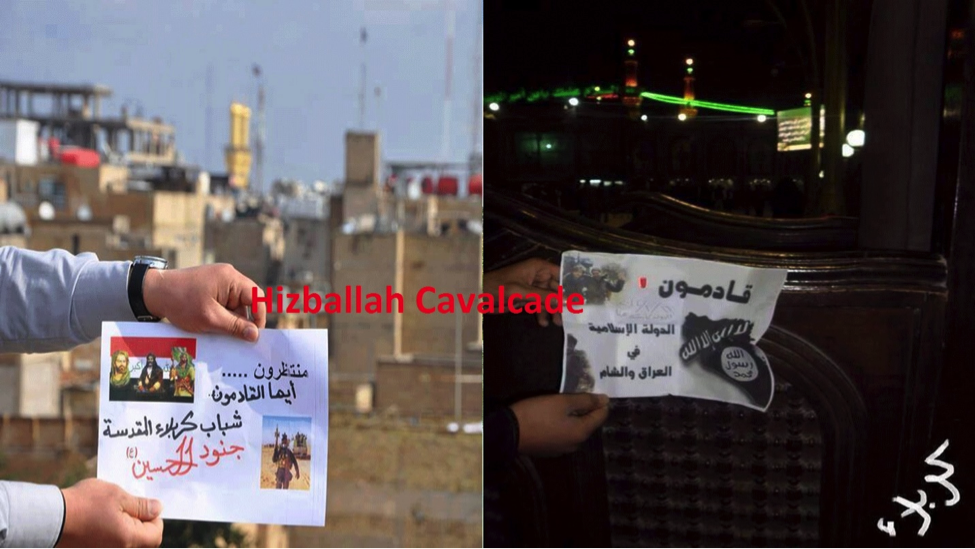
Figure 16: Selfie Taunts: On the right an ISIS supporter holds up a picture near the Imam Husayn Mosque/Shrine complex in Karbala. The sign reads, “Qadimoun” (“We are coming”). As a response to the pro-ISIS message, (on the left) “We are waiting for those coming, [we] the young men of sacred Karbala Soldiers of Husayn”.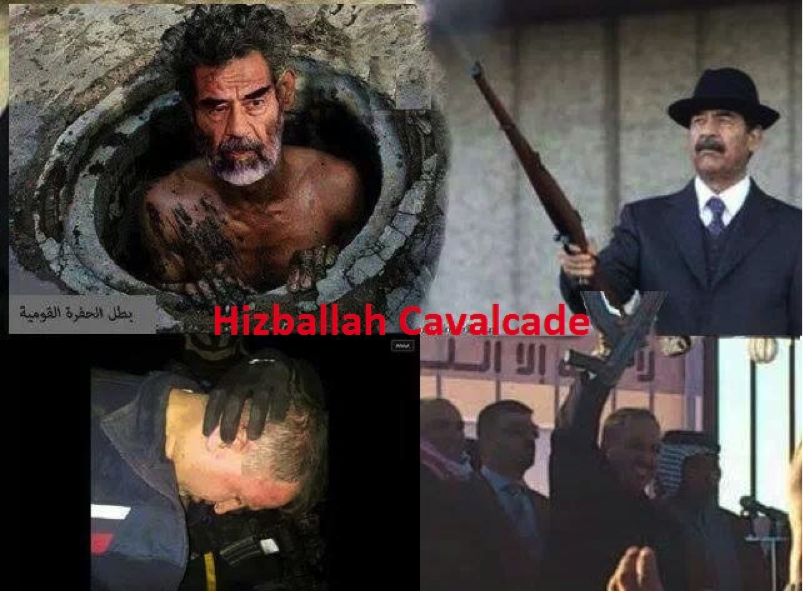
Figure 17: Right Left (top) An edited photo shows deposed Iraqi leader Saddam Husayn emerging from a dirty sewer. Left (bottom) Alwani is shown following his capture. The photo was spread on Sadrist and Iranian-backed Shia Islamist pages. The image promotes a theme of “how the mighty have fallen.” 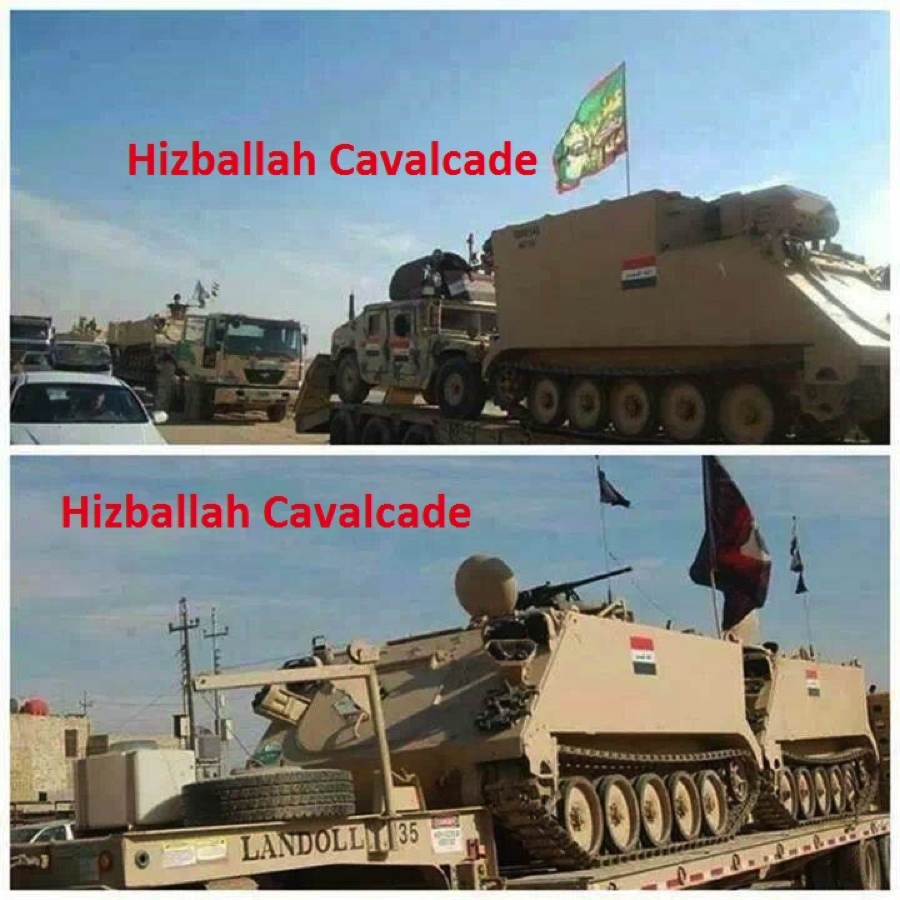
Figure 18: Another photo released on social media claiming to show Iraqi APCs flying Shia religious flags. The photos were shared online by ISIS sympathizers and Shia Islamist groups. The latter used the photos as a subtle way to suggest the Iraqi Army had Shia Islamic sectarian loyalties.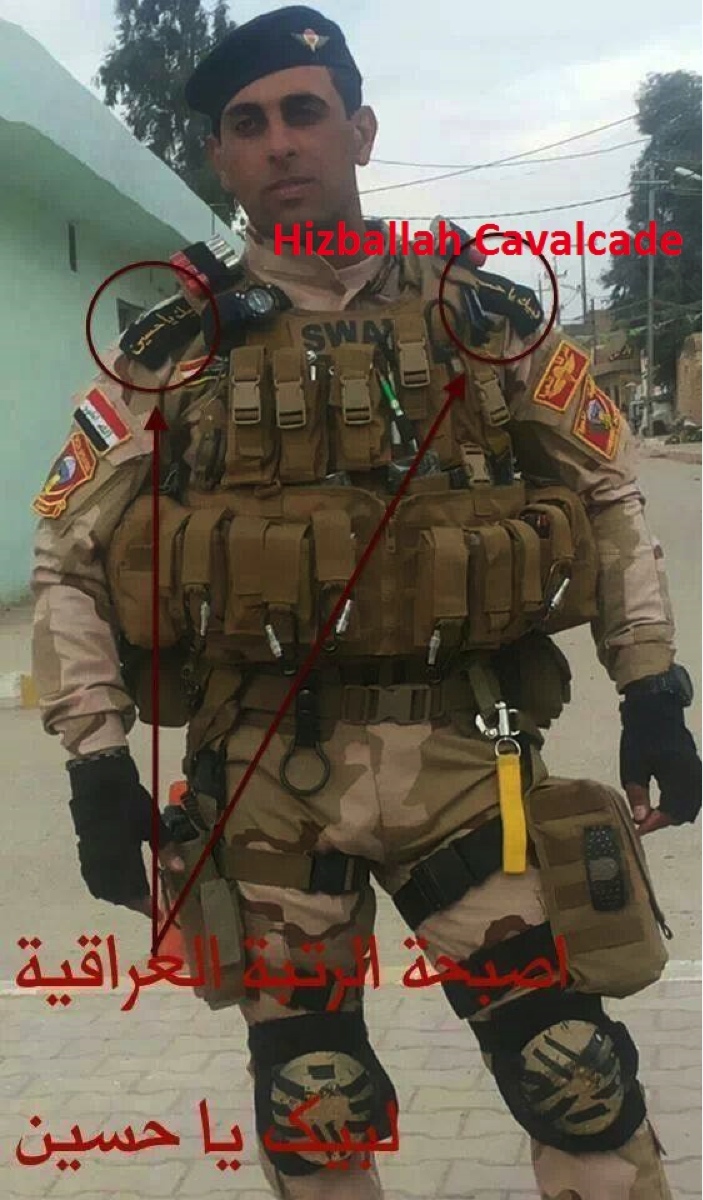
Figure 19: Shia Islamist and Sunni supporters of the protests and of ISIS circulated this photo on social media (including Twitter and Facebook). The photo purports to show an Iraqi Special Forces/SWAT member wearing epaulettes reading, “Labayk ya Husayn” (“At your service, O Husayn”), a Shia slogan used to show support for the Shi’ism’s first Imam.
One video uploaded claimed to show Iraqi units assembling before heading into Anbar and flying Shia religious flags. Due to the lower quality of the images in the video, the claim could not be confirmed. Accounts affiliated with Asa’ib Ahl al-Haq also uploaded a response to the offensive against ISIS. In their clip, a man sets up a system for a unmanned aerial vehicle (UAV) which then spots what can assumed to be ISIS positions. The ISIS positions are then destroyed. The clip was entitled, “A message from Asa’ib Ahl al-Haq to Da’sh” (note: Da’sh is the Arabic acronym for ISIS).
Musings of an Iraqi Brasenostril on Jihad: Comprehensive Reference Guide to Sunni Militant Groups in Iraq
NOTE: An archive of the Musings of an Iraqi Brasenostril on Jihad column can be found here.
–
Comprehensive Reference Guide to Sunni Militant Groups in Iraq
By Aymenn Jawad Al-Tamimi
As the overall Sunni insurgency has gained ground in Iraq, much discussion will naturally revolve around the question of which groups are the main actors in the insurgency. Here I will discuss those groups in-depth, and the relations between them.
Islamic State of Iraq and ash-Sham (ISIS)
Intro: An al-Qa’ida affiliate?
By far the most prominent group in terms of wider media attention, ISIS in Iraq is almost universally described as an “al-Qa’ida affiliate.” However, it should be emphasized that the evidence for this characterization can only be described as ambiguous at best, and in truth, points to ISIS not being al-Qa’ida’s branch in Iraq.
Now, it is true that one can find evidence that may suggest ISIS is an al-Qa’ida affiliate. Most notably, in his interview with al-Jazeera Arabic, Sheikh Abu Mohammed al-Jowlani of Jabhat al-Nusra- al-Qa’ida’s official Syrian affiliate- likened the existence of his group and that of ISIS to being members of “one house,” and that the issue of the disagreement over Sheikh Abu Bakr al-Baghdadi’s announcement of ISIS had been raised with “our amir and their amir: Aymenn al-Zawahiri, may God protect him.” There is no reason to doubt that Sheikh Jowlani sincerely believes ISIS is part of the same al-Qa’ida family.
However, ISIS originated as the Islamic State of Iraq (ISI): an umbrella group formed in October 2006 and composed of a number of insurgent groups, whose main component was probably the original al-Qa’ida in Iraq (AQI) organization, but this AQI component was quickly absorbed into ISI. When new members joined ISI, the pledge of allegiance- bay’ah– was given to the commander of ISI, not necessarily requiring one to al-Qa’ida central’s leadership as well.
Indeed, by 2007, Sheikh Zawahiri of al-Qa’ida central declared: “First, I want to clarify that there is nothing in Iraq now by the name of al-Qa’ida, but Tanzim al-Qa’ida fi Bilad al-Rafidayn joined- by Allah’s preference- other jihadi groups in the Islamic State of Iraq.” While it would seem that in his ruling last year for the dissolution of ISIS, Sheikh Zawahiri assumed that Sheikh Baghdadi would defer to his authority, likely on account of Sheikh Baghdadi’s apparent history as a leading member in AQI who would not have forgotten his bay’ah to the central organization (just like Sheikh Jowlani, who was an AQI and ISI veteran), Sheikh Baghdadi’s rejection of the ruling indicates the true break between ISIS and al-Qa’ida central.
On the ground, some ISIS mujahideen accept this break as reality, and thus members in Syria like the British mujahid Abu Qaa’qaa explicitly reject identification as al-Qa’ida. Others I know express ambivalence: thus one native Syrian member of ISIS in Ghouta, Damascus province, said to me that he had pledged bay’ah to Sheikh Baghdadi but did not know if in turn Sheikh Baghdadi had pledged allegiance to Sheikh Zawahiri.
Also of relevance here is how ISIS’ commander projects himself and how the group projects its goals. Although the amir of ISIS for Idlib province has denied that ISIS’ overall amir considers himself a caliph, it is hard not to draw that conclusion from the title assumed: “amir al-mu’mineen” (“commander of the believers”- a traditional title of caliphs) in addition to claimed descent from the family of the Prophet Mohammed (“al-Husseini”) and the tribe of the Prophet (“al-Quraishi”). In addition, more so than any other group, ISIS places particular emphasis on the imminent establishment of a Caliphate (e.g. with the slogan “the promised project of the Caliphate”), and images of the world under the iSIS banner regularly appear in pro-ISIS social media circles.

Figure 1: ISIS signboard from Azaz area: “The promised project of the Caliphate.”
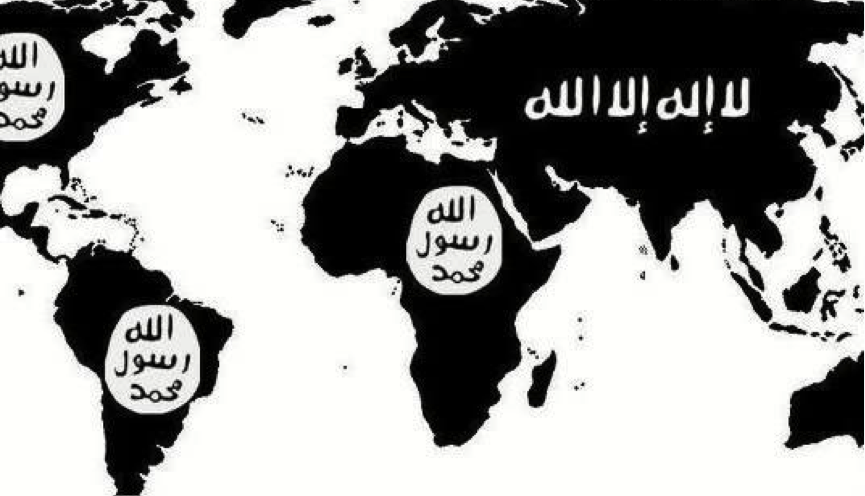
Figure 2: The entire world under the ISIS banner.
It should be noted that these aspirations of Caliphate and world domination are not so openly projected by ISIS within Iraq, as I have outlined before. However, that does not mean ISIS in Iraq has abandoned these goals. It is simply a matter of trying to take advantage of growing Sunni Arab disillusionment with the government and portraying itself as the upholder of their interests.
Perhaps the most explicit distancing yet of al-Qa’ida central from ISIS on the part of a senior jihadi comes from Sheikh Abu Khalid al-Suri: a supposed Ahrar ash-Sham official and al-Qa’ida central member who was appointed by Sheikh Zawahiri to mediate between ISIS and Jabhat al-Nusra. In light of the ongoing fighting between ISIS and various rebel groups in Syria, Sheikh Abu Khalid released a statement condemning ISIS’ conduct and decrying ISIS’ “crimes” being committed “in the name of jihad and the establishment of an Islamic state, and being attributed to” figures like Sheikh Zawahiri and Sheikh Osama bin Laden [i.e. on account of media coverage calling ISIS an al-Qa’ida affiliate]. His statement added that these al-Qa’ida figures are “innocent of what is being attributed to them, just as the wolf was innocent of spilling the blood of Ibn Yaqub.” He concludes with a call for ISIS members to repent for their conduct.
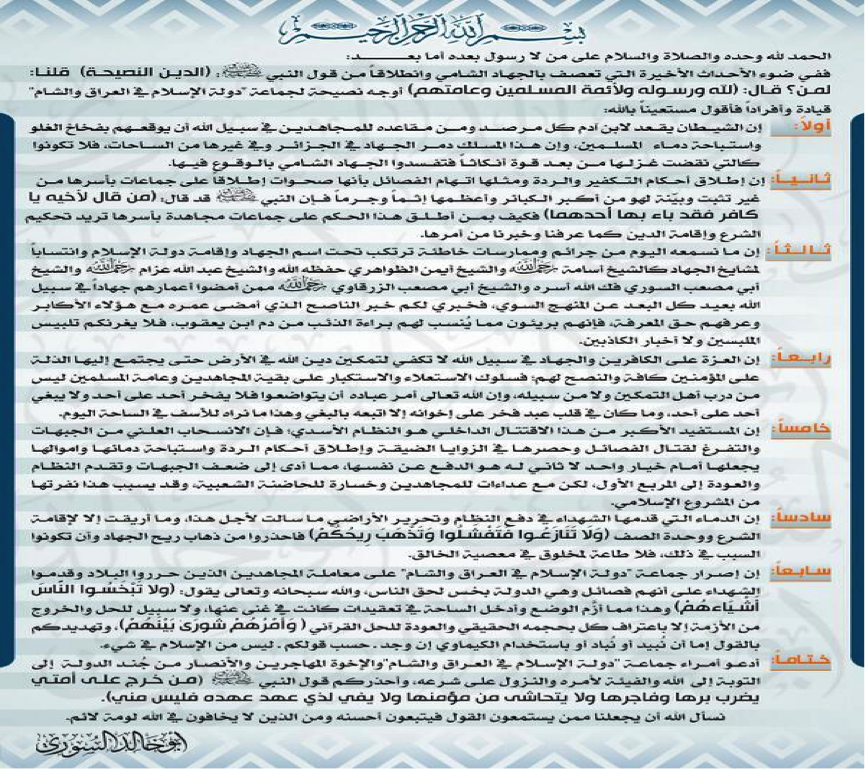
Figure 3: Statement from Sheikh Abu Khalid condemning ISIS.
Operations and Activities
Of all the militant groups in Iraq, ISIS stands out for having the most extensive financial resources (in large part deriving from the fact that in Mosul, from which the government ultimately failed to dislodge the group even during the surge, ISIS is the Mafia), manpower and range of operations, with the occasional ability to conduct attacks in the predominantly Shi’a areas of the soutb (e.g. Najaf, Karbala, Kut and Wasit). Similarly, coordinated bomb attacks in Baghdad can be reliably traced to ISIS: something other insurgent groups have so far proven themselves incapable of carrying out.
By province, ISIS is by far strongest in Anbar province, where the group operates clandestine training camps and has until this month maintained a rather shadowy existence, conducting some hard-hitting attacks over the past few months including a string of several suicide bomb attacks in a single day targeting local police in the town of Rawa.
Currently, the group remains in control of parts of Ramadi and Fallujah, following on from their entry with the withdrawal of the Iraqi army in the face of widespread Sunni anger at Maliki’s attempt to dismantle the Ramadi camp protest site. Some of the more recent operations in Anbar include firing mortar rounds at Sahwa leader Abu Risha’s estate and heavy fighting with security forces in a number of urban Anbar locations including Street 60 and al-Mal’ab quarter in Ramadi as well as the al-Khaldiya area near Fallujah.
To a limited extent, the group in Anbar has had a boost in manpower provided from eastern Syria, both with influx of muhajireen (as related on the testimony of Abu Qaa’qaa) and the fact that Jabhat al-Nusra’s leadership in the Deir az-Zor border town of Albukamal/Abu Kamal, along with Liwa al-Qadisiya al-Islamiya’s overall leader, entered into Iraq for much of 2013 to aid ISIS in the fight against government forces. The latter points were related to me by a Liwa al-Qadisiya al-Islamiya fighter, who also told me that his group like ISIS supports a Caliphate stretching first over Iraq and Bilad ash-Sham.
Outside of Anbar, the group has regularly conducted attacks on the Iraqi army in various districts of Mosul, has targeted the Shi’a Turkmen of Tuz Kharmuto with bomb attacks, and has various pinpoints of activity including the Baiji area of Salah ad-Din province, Jurf al-Sakhr in northern Babil province (just south of Baghdad), and the Tarmiya area of northern Baghdad province, where assaults have been regularly launched on “Sahwa” forces, culminating in a mass execution of 18 Sunnis suspected of being “Sahwa” in November.
Last year also saw the significant development of ISIS operations within Iraqi Kurdistan with the Arbil bombings in September, claimed by ISIS in retaliation for the Kurdistan Regional Government’s supposed support for the “PKK” in Syria. Indeed, ISIS in Syria has seen an infusion of some Iraqi Kurdish manpower that appears to be alternating back and forth between Syria and Iraq. In a major assault launched by ISIS on security forces in Kirkuk in early December, it emerged from ISIS sources that the leaders of the operation- all eventually killed- were Kurdish.
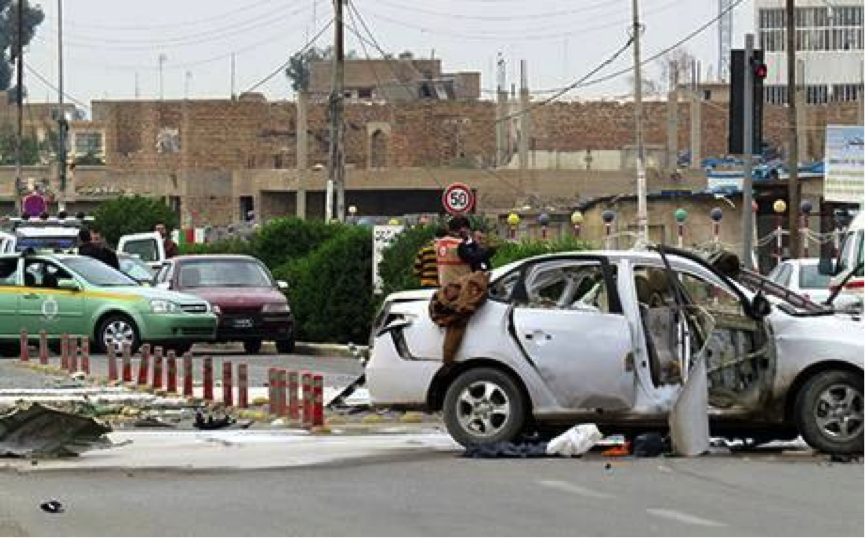
Figure 4: Aftermath of car bombing by ISIS in Kirkuk as part of assault operation on intelligence HQ in early December.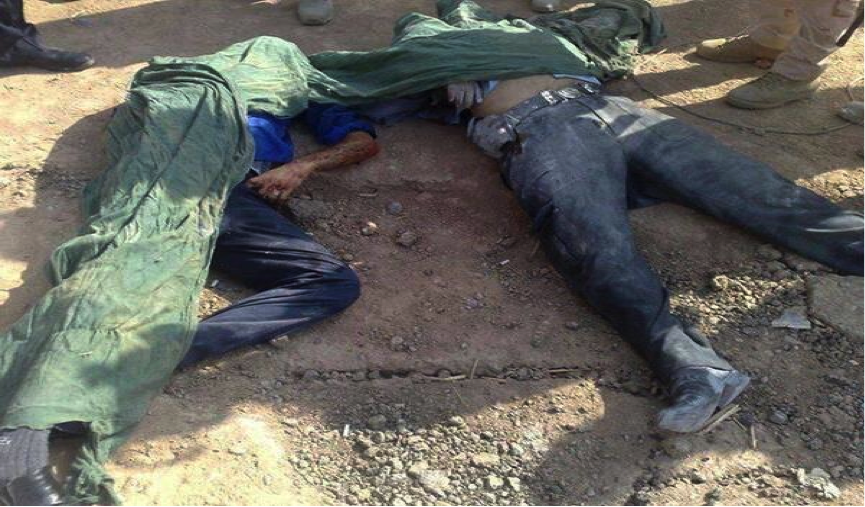
Figure 5: Two men from local security forces slain by ISIS in the Kirkuk assault.

Figure 6: Abu al-Maqdisi al-Kurdi, one of the Kurdish commandoes behind the ISIS assault on Kirkuk.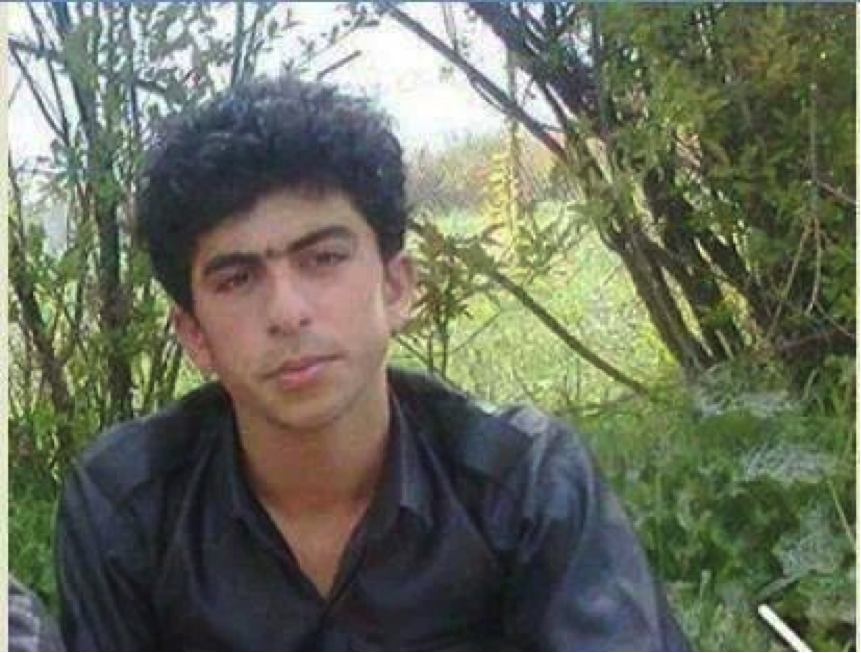
Figure 7: Abu Abdullah al-Kurdi, another of
al-Furqān Media presents a new video message from the Islamic State of Iraq and al-Shām: "Epic Battles of Greater al-Anbār #1"

__________
To inquire about a translation for this audio message for a fee email: [email protected]
Hizballah Cavalcade: Faylak Wa'ad al-Sadiq: The Repackaging of an Iraqi “Special Group” for Syria
NOTE: For prior parts in the Hizballah Cavalcade series you can view an archive of it all here.
—
Faylak Wa’ad al-Sadiq: The Repackaging of an Iraqi “Special Group” for Syria
By Phillip Smyth
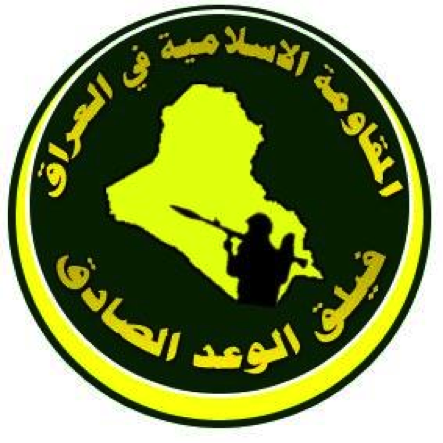
Figure 1: Faylak Wa’ad al-Sadiq’s logo. The top line reads: “The Islamic Resistance in Iraq” (“Al-Muqawama al-Islamiyya fi al-Iraq”). The bottom says, “The Truthful Promise Corps” (“Faylaq al-Wa’ad al-Sadiq”). The logo features the map of Iraq in the center with a blackened figure holding an RPG-7.
Officially known as Al-Muqawama al-Islamiyya fi al-Iraq-Faylaq al-Wa’ad al-Sadiq or The Islamic Resistance in Iraq-The Truthful Promise Corps (FWS), this organization has made some waves in Arabic-language media following the discovery of some of its images on social media networks.[1] Led by a Secretary General, FWS’s current leader is Iraqi Shia Sheikh Abu ‘Ammar al-Tamimi (A.K.A. Shiekh ‘Ammar). The organization also claims to be based in the holy city of Najaf, Iraq. It is clear from assessing the trajectory of public statements and their social media presence that the FWS appears to be increasing its public presence in an effort to establish the belief there are further organized Shia Islamist force deployments in Syria.
The group’s name references Lebanese Hizballah’s Secretary General’s long-standing goal to kidnap Israeli soldiers. This “promise” came to fruition in July 2006, when fighters from Lebanese Hizballah attacked an Israeli military convoy and kidnapped two Israeli soldiers and killed three. The attack spurred what would turn into the more than a month long 2006 Hizballah-Israel War.[2]
It is unclear whether it was created immediately following the 2006 Hizballah-Israel War or if it was established later in 2010-2011.
Reportedly, the FWS was first established to “fight the U.S. occupation of Iraq and the collaborators [associated with it]”.[3] In January 2012, FWS claimed it had no interest in running for elections or becoming part of the Iraqi government.[4] In August 2012, the FWS’s spokesperson Sheikh ‘Amr al-Lami, claimed the group changed paths and stated it would instead focus on civil projects. One year later, the organization claimed to have sent its first fighters (from a “military wing”) to Syria in order to, “defend shrines”.[5] “Shrine defense” has been the most prevalent narrative used by Iranian-backed Shia Islamist fighting groups which have deployed to Syria.
The group also made its first video and a group musical anthem public in January 2014. Though it appears to have been uploaded in February 2012. It is possible FWS uploaded the clip many months ago, then made it “private”, only to re-release it as part of a ramping-up of their public image. In the short clip, the FWS-subgroup which claims the attack is called Kata’ib Musa al-Khadhim-Sariyya ‘Ammar Ibn Yasir (The Musa al-Khadhim Brigade-‘Ammar Ibn Yasir Unit). Musa al-Khadhim references the seventh Imam in Twelver Shia Islam.[6] The targeted vehicle in the clip appears to be a U.S. armored HMMWV. [7] The naming of subdivisions after imams is a common form utilized by Iranian-backed Iraqi special groups.[8]
Little was known about the organization during the Iraq War (2003) and it had few announcements. The group also claimed to have its own webpage (since 2011). However, when the page is visited, it does not load.[9] Instead, with public appearances and statements by its leadership, it seems that since the summer of 2013, FWS has been dusted-off and repurposed for a new mission in Syria. September 2013 saw FWS start its initial postings on social media pages it had done little with since opening them in 2011.
This may indicate that the FWS was little more than a front-type group during the Iraq War (2003) which may now field rebranded fighters from other groups for the fight in Syria. In turn, this helps create perception of broader Iraqi Shia support for the concept of Wilayat al-Faqih and of this ideological grouping’s war in Syria. Comments on the page largely praised the leadership of Asa’ib Ahl al-Haq. This mirrors newly created front groups such as Harakat Hizballah al-Nujaba (or Harakat al-Nujaba), which fields fighters from Kata’ib Hizballah and Asa’ib Ahl al-Haq (AAH), has a leader from AAH’s ranks, yet is cast as independent organization. Photos of fighters from Harakat al-Nujaba front militias in Syria and those from Asa’ib Ahl al-Haq have found a presence on FWS’s Facebook page and adjoining profiles.
In addition to the organization’s name and links to other Iraqi Shia “special groups”, another element further cementing its relationship with Iran and its proxy militant groups, was the group claiming adherence to the concept of Wilayat al-Faqih. Wilayat al-Faqih, or the Absolute Guardianship by a Jurisprudent is Iran’s form of radical theocratic governing system. In August of 2013, the reported leader of FWS visited Beirut and confirmed his loyalty to the political-religious ideology.[10] The lead jurisprudent, or Wali al-Faqih, who is followed by FWS is Iranian Supreme Leader Ayatollah Khamenei. The organization’s imagery also details their loyalty to Khamenei.
Little is known about FWS’s combat abilities, force size, or deployments. In photos released by the group, it has been shown they have what can be considered a normal small-arms accompaniment, ranging from PKM-type machineguns to Kalashnikov pattern rifles. One important detail about deployments in Syria was that the FWS has only claimed (so far) to have specifically fought in one area, Aleppo. This further helps tie the group to Asa’ib Ahl al-Haq’s Harakat al-Nujaba and their Liwa’a ‘Ammar Ibn Yasir (LAIY). LAIY was the first Iraqi Shia Islamist group to announce they were fighting in Aleppo. The announcement also coincided with the December 2013-January 2014 increase in announced Shia Islamist military activities in Rif Aleppo and the city.
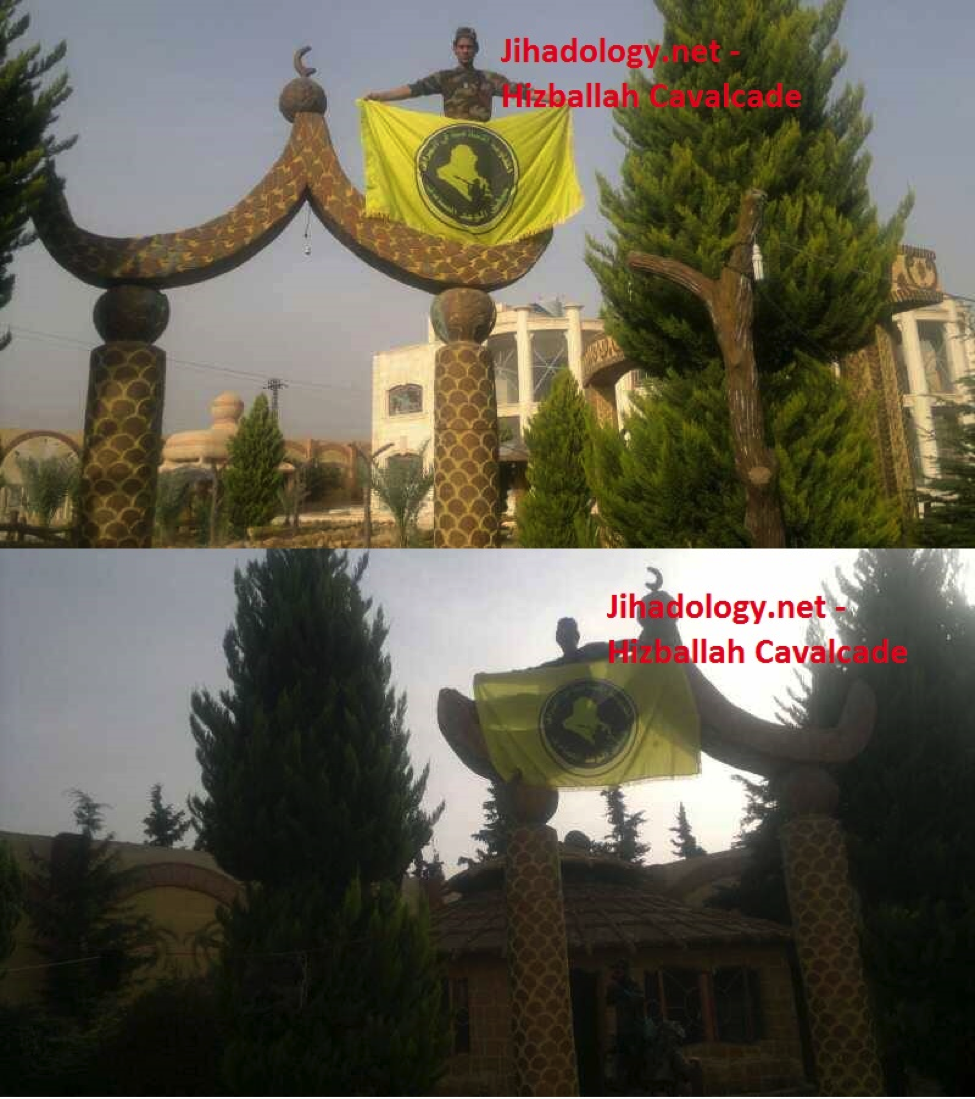
Figure 2: These photos, posted in mid-December, claimed to show an FWS fighter in Aleppo, Syria.
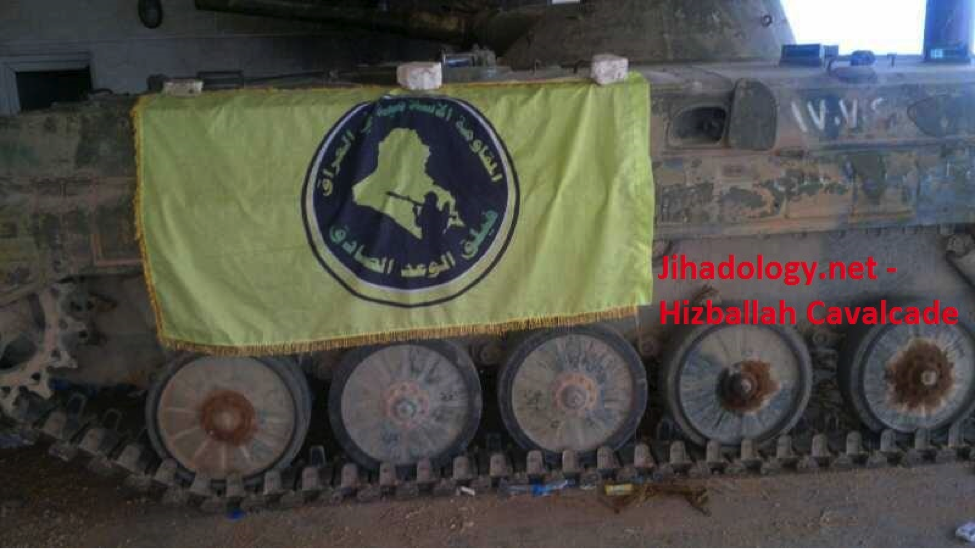
Figure 3: The FWS flag flies on a BMP-1 armored personnel carrier. It is unknown whether this flag was placed on an Iranian, Iraqi, or Syrian BMP-1 infantry fighting vehicle.
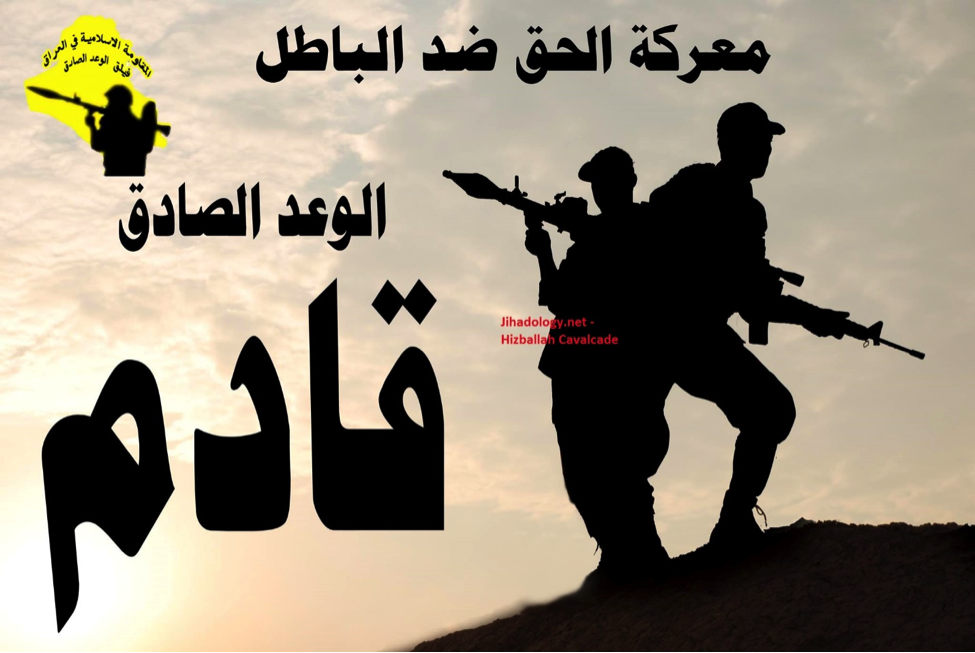
Figure 4: “ma’rkat al-haq dhud al-batl al-wa’ad sadiq qadm” or the “Battle of truth against falsehood, the truthful promise is coming”.
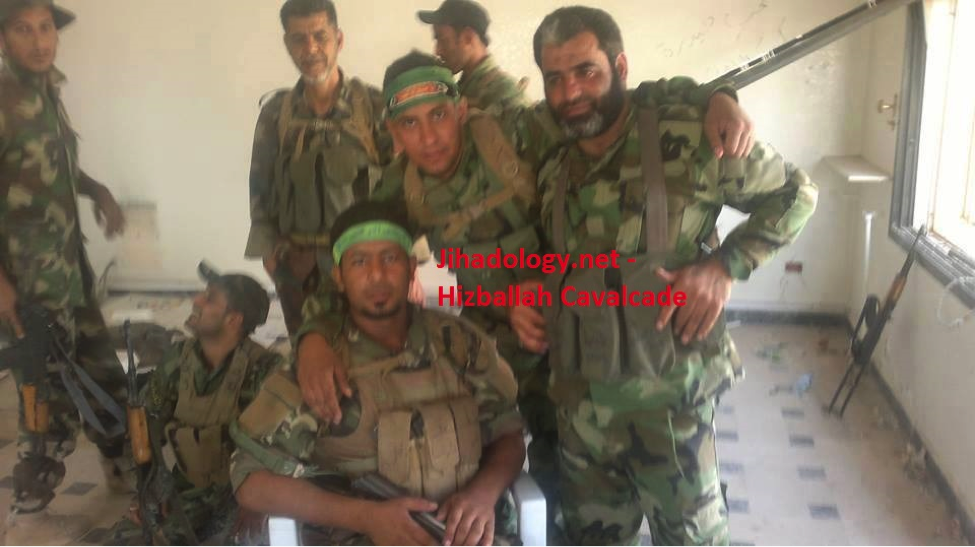
Figure 5: This photo claims these are Faylak Wa’ad al-Sadiq personnel. However, the photo has been posted by other Shi’a Islamist fighting groups.
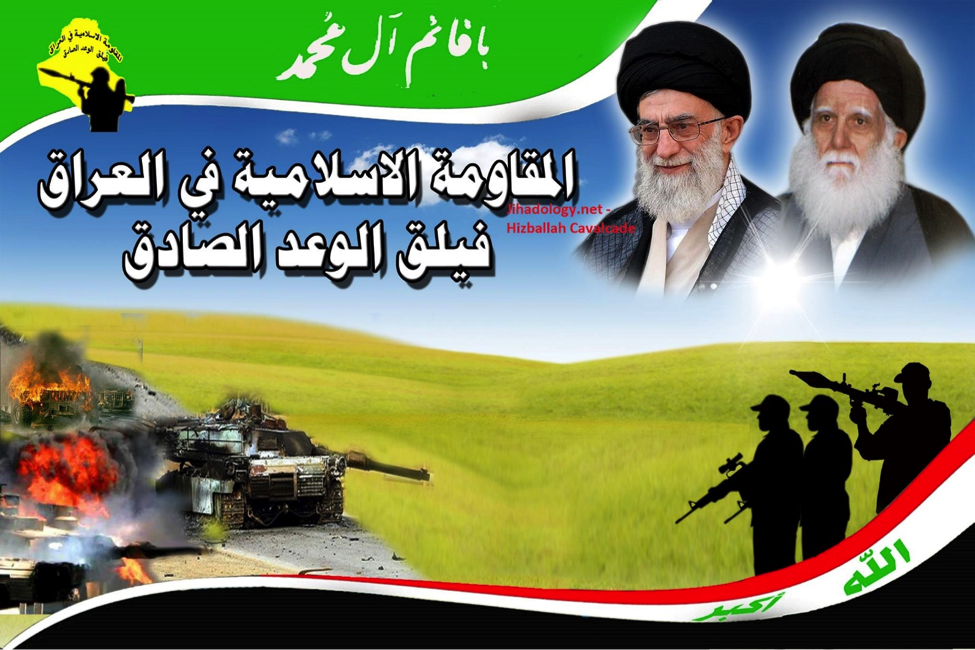
Figure 6: Iranian Supreme Leader Ayatollah Khamenei and Muhammed Muhammed Sadiq Sadr look from the sky down at burned-out U.S. armored vehicles. An Iraqi flag graphic is flows from the lower-right corner.
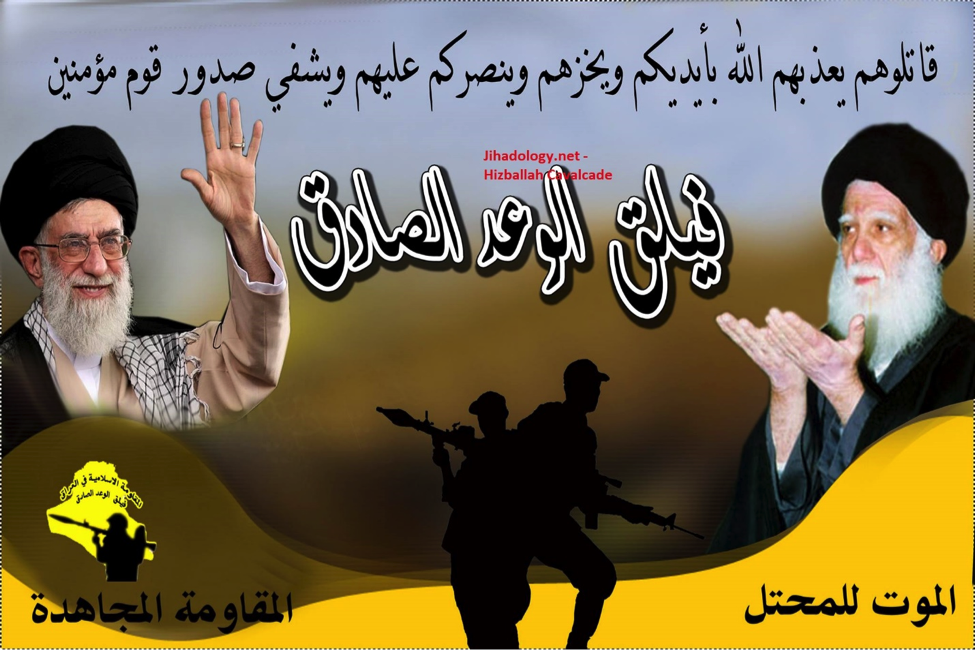
Figure 7: Another poster featuring Iranian Surpreme Leader Ayatollah Khamenei and Muhammed Muhammed Sadiq Sadr.
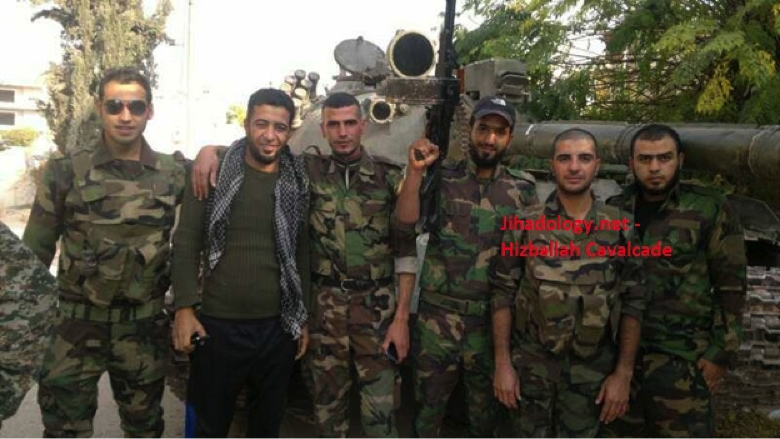
Figure 8: FWS fighters pose in front of a tank.
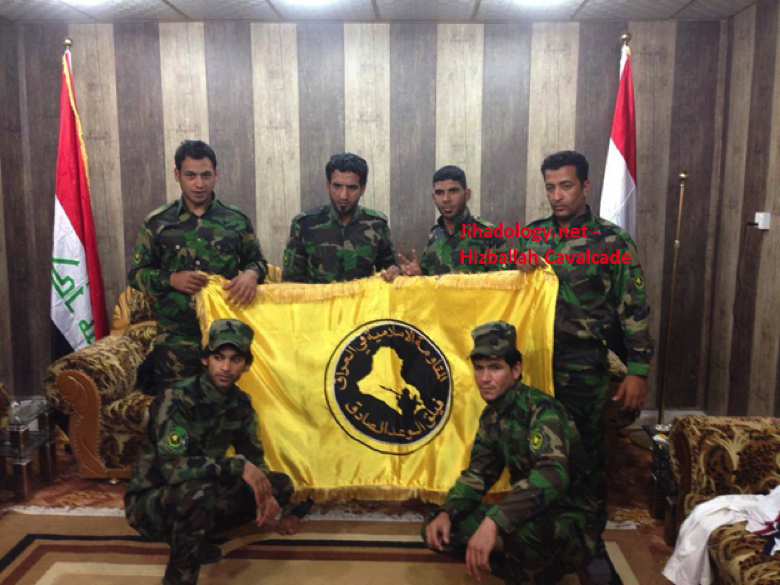
Figure 9: Uniformed FWS members pose with the group’s flag while flanked by Iraqi flags. Note the FWS patches worn by these 6 members.
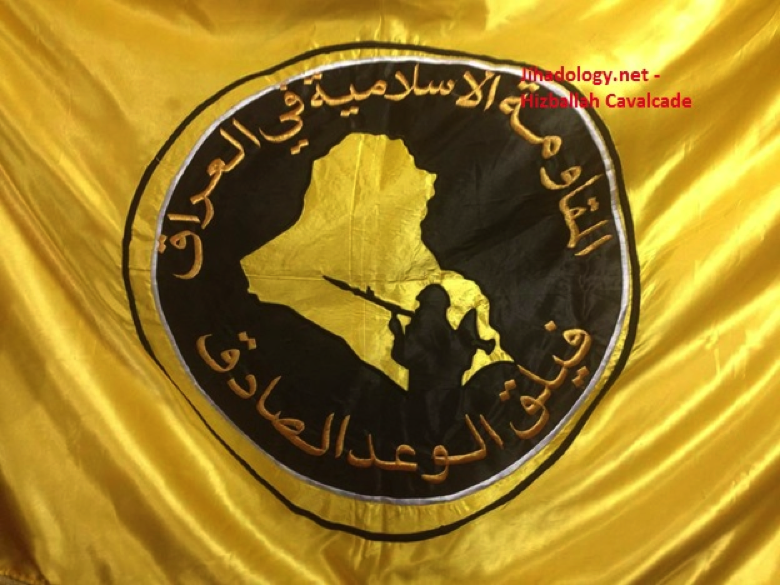
Figure 10: The FWS flag.
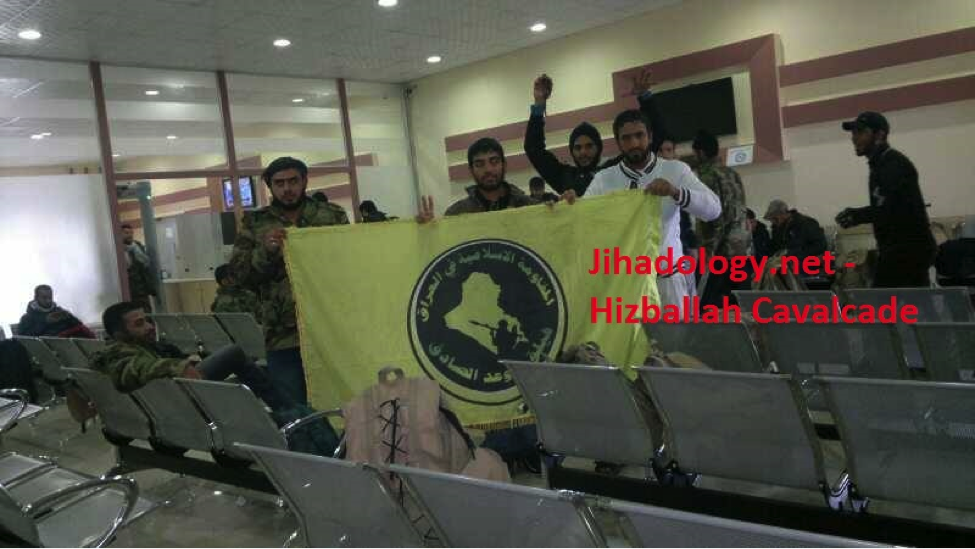
Figure 11: FWS fighters hold up the group’s flag.
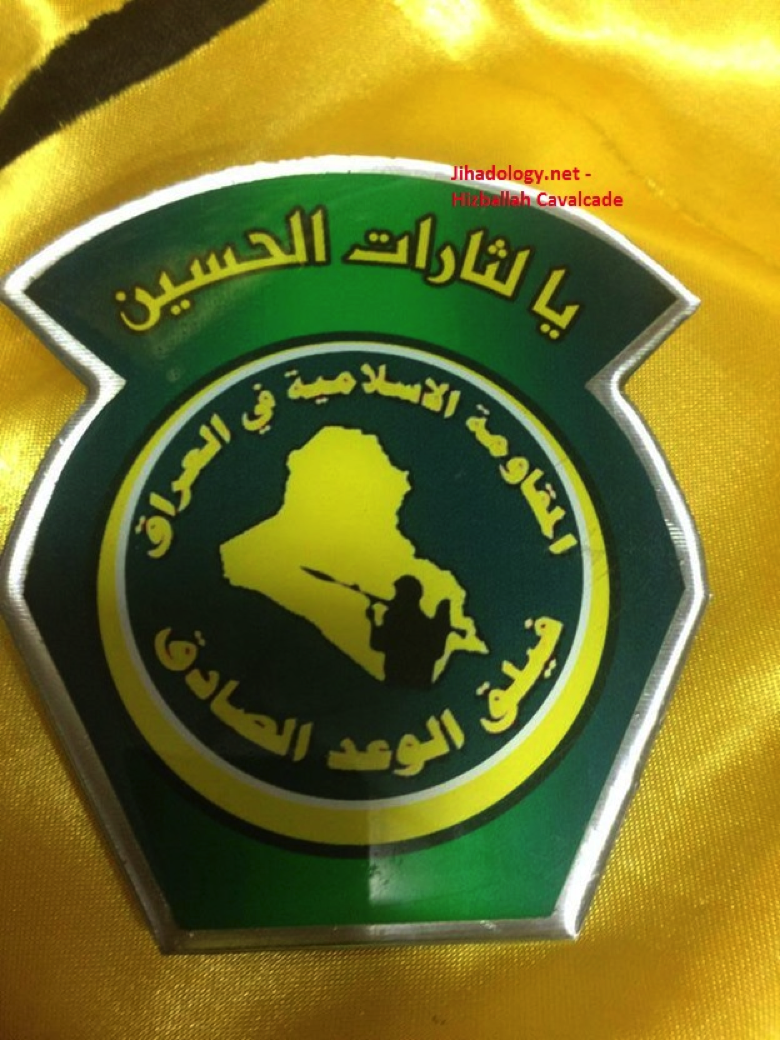
Figure 12: Another piece of FWS symbolism.
al-I’tiṣām Media presents a new video message from the Islamic State of Iraq and al-Shām: “Series of the Life From the Words of the ‘Ulamā’ on the Project of the Islamic State #3: Abū Yaḥyā al-Lībī”
al-I’tiṣām Media presents a new video message from the Islamic State of Iraq and al-Shām: “Series of the Life From the Words of the ‘Ulamā’ on the Project of the Islamic State #2: Usāmah Bin Lādin"
NOTE: Click here for the first part in this video series.
—
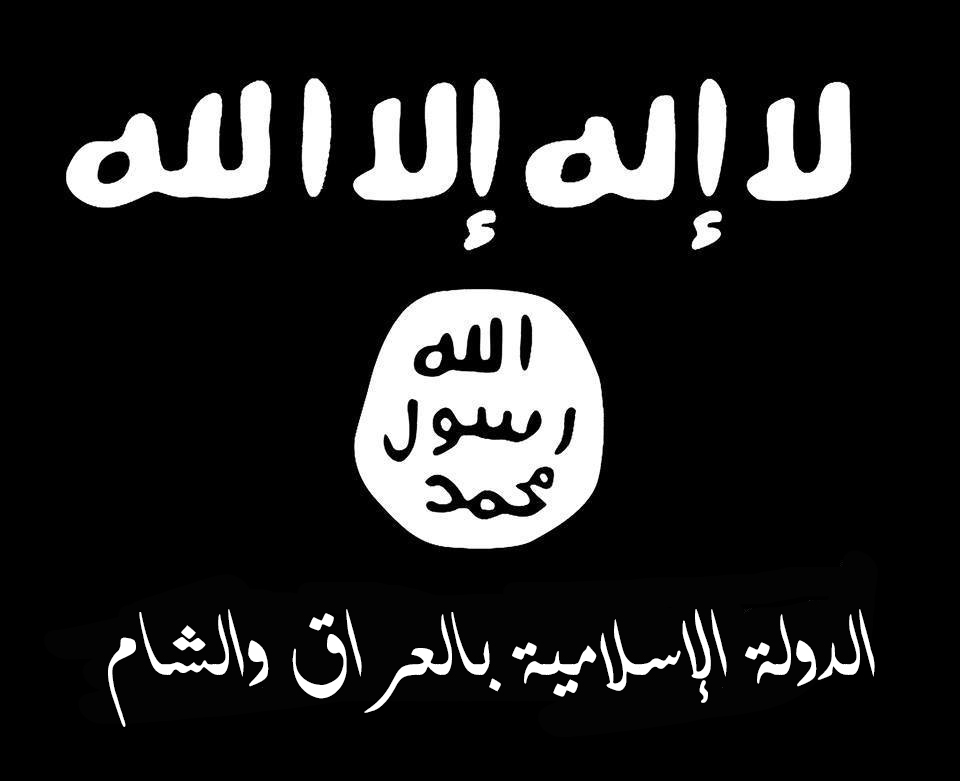
__________
Hizballah Cavalcade: Khamenei’s Cannon: .50 Caliber Anti-Material Rifles & Shia Fighters in Syria
NOTE: For prior parts in the Hizballah Cavalcade series you can view an archive of it all here.
–
Khamenei’s Cannon: .50 Caliber Anti-Material Rifles & Shia Fighters in Syria
By Phillip Smyth
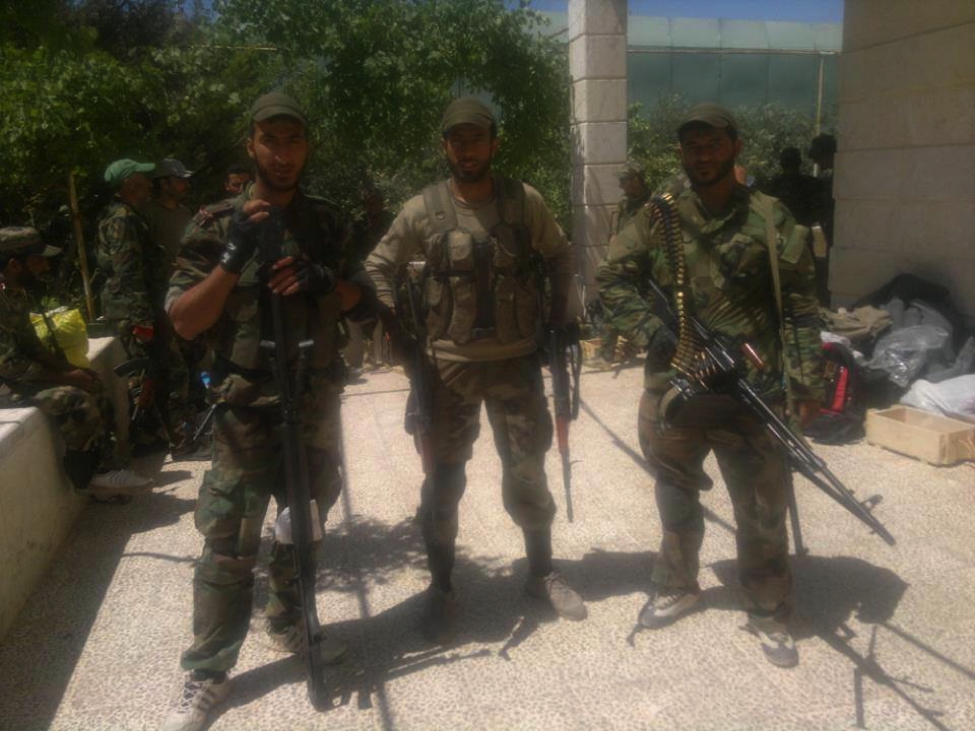
Figure 1: Combatants from Liwa’a ‘Ammar Ibn Yasir. The fighter on the left likely holds an Iranian-copy of the HS.50 rifle.
Since April 2013, around the same time Liwa’a Abu Fadl al-Abbas was first gaining broader exposure and name-recognition, another sub-trend started to appear in the photos showing Shia Islamist fighters in Syria. This trend remained minor and occasional. However, starting in October, there have been increasing examples of foreign Shia Islamist fighters being pictured with long range bolt-action anti-material rifles.[1]
It is possible these weapons were the bolt-action HS.50, .50 caliber (12.7x99mm) rifles produced by Austria’s Steyr Mannlicher. According to The Telegraph, 800 of the rifles were shipped to Iran in 2007.[2] However, according to the Brown Moses Blog, it is far more probable that these rifles are actually Iranian copies which were shipped to Syria.[3] Since the winter of 2012, pro-Iranian social media has also praised the Iranian-made copy of the rifle.[4] Still, serial numbers on the weapons are often hidden, making absolute confirmation difficult.
The original Steyr Mannlicher sale of these long-range weapons caused worries among British and U.S. policymakers and military personnel due to the fear they would be supplied to Iranian-created and supplied Shi’a Islamist “special groups” in Iraq. These groups included Asa’ib Ahl al-Haq and Kata’ib Hizballah. Both of these organizations are now sending forces to Syria.
Anti-material sniper rifles of this caliber have found a welcome place in Western military services. The U.S. military fields the M107 semi-automatic .50 caliber rifle as do a number of other militaries. In October, 2012 one of these weapons killed a Taliban member in Afghanistan from a distance of 2,475 meters.[5]
Presently in Syria, these types of rifles have been used by both rebels and pro-Assad forces. Nevertheless, the outfitting of highly organized foreign Shia fighter manned organizations may demonstrate a shift in tactics and training.
Groups using the rifle in Syria span the full spectrum of organizations backed by Iran. Lebanese Hizballah has been a primary poster of images with the weapon. Additionally, Iraq-based Harakat Hizballah al-Nujaba’s (a front for Kata’ib Hizballah and Asa’ib Ahl al-Haq) Syria-based front militias, Liwa’a ‘Ammar Ibn Yasir and Liwa’a al-Hamad have posted photos of their militants with the rifle. Iraq’s Badr Organization’s Quwet Shahid Muhammed Baqir Sadr and Kata’ib Sayyid al-Shuhada have posted their own images of their fighters with the HS.50 type rifle. Other Shia fighters from unnamed organizations have also been pictured with the weapon.
Films featuring Shia militia groups using the HS. 50 type rifles in combat in Syria have been extremely rare. Usually only photos are posted.
The first film showing Shia Islamist militias in Syria using the rifle was posted to Facebook and YouTube pages associated with the Badr Organization’s Quwet Shahid Baqir Sadr (BOQSBS), the group’s expeditionary unit in Syria. The BOQSBS has also been a main poster of high-quality images showing their combatants wielding these types of anti-material rifles. Around a minute of footage showing BOQSBS fighters using the weapon was inserted into a much longer film made to demonstrate the group’s activities in Syria (see below at minute markers 1:59-2:23).
Due to the high level of operational security employed by these groups, potential failures or successes of the rifle in combat are often not showcased. Operations using the rifle have also not been detailed on the many social media pages run by Iranian-backed Shia militia groups inside Syria. In fact, the rifle has rarely been named or described by Shia Islamist militia pages. Nevertheless, these rifles have become a regular feature in images featuring fallen fighters.
Such a capability, even if deliberately showcased for propaganda purposes, should be taken seriously by regional and global military forces. Iranian equipped and trained snipers, utilizing smaller caliber rifles, demonstrated a lethal efficiency during the Iraq War (2003). Their utilization of smaller caliber-wielding snipers (particularly using the SVD-type rifles) demonstrates a concentration on sniping tactics.
Some Possible Reasons Why the Rifles Are Appearing More
- Propaganda Purposes: Some of the photos of fighters holding the rifle appear to be posed images meant to showcase the size of the weapon (representing power) in comparison to the fighter. Additionally, since it is probably a copy, showing the rifle in operations overseas is a sign that Iranian-made weapons are of a high quality. Proxy organizations may also see the rifle as a symbol of advancement and as a sign they are comparable to first-world armies. The weapon may also be a sign to rebel groups that Shia militants have more advanced capabilities.
- General Incorporation into the Order of Battle: The rifle could have possibly become more prolific with increased foreign-manned Shia militia operations.
- Offensive Operations: Since the start of main offensives in October and increase in numbers of Shia fighters, it is possible the rifle has found more use and acceptance by fighters.
The Rifle & Its Shia Islamist Users
Lebanese Hizballah:
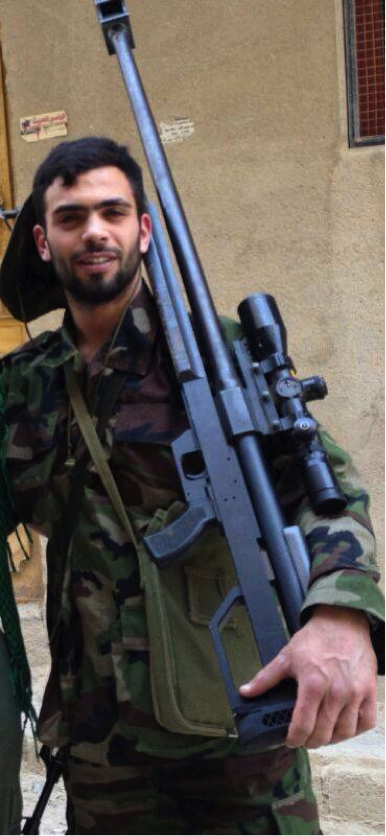
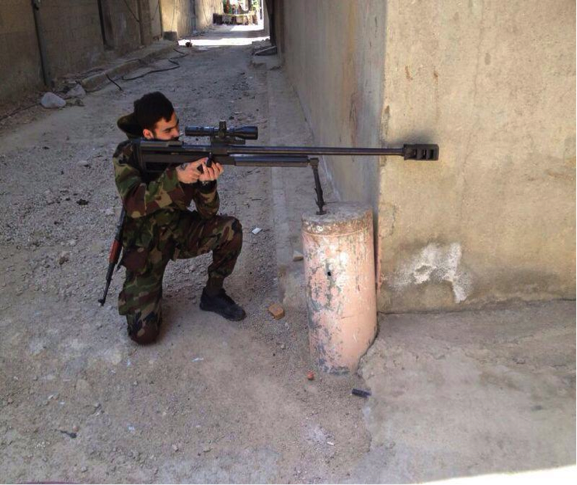
Figure 2: Lebanese Hizballah’s Ali al-Hadi Nuwn shown holding the weapon on his shoulder. (Left)
Figure 3: Another posed-photo of Lebanese Hizballah’s Ali al-Hadi Nuwn. In this picture he is taking aim with the .50 caliber rifle. (Right)
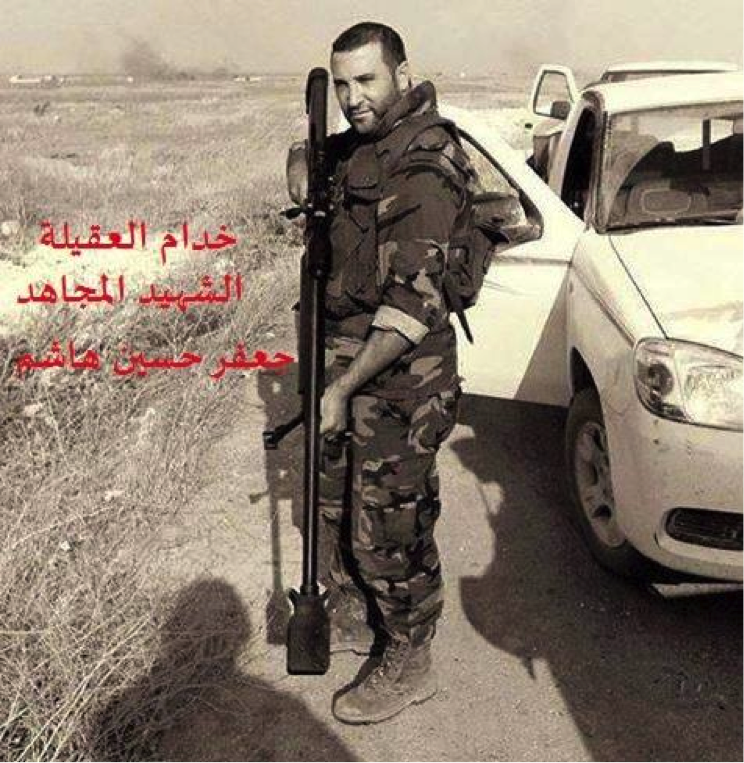
Figure 4: Hizballah commander Ja’afar Husayn Hashim with the rifle. He was reported to have been killed in Syria on November 1, 2013.
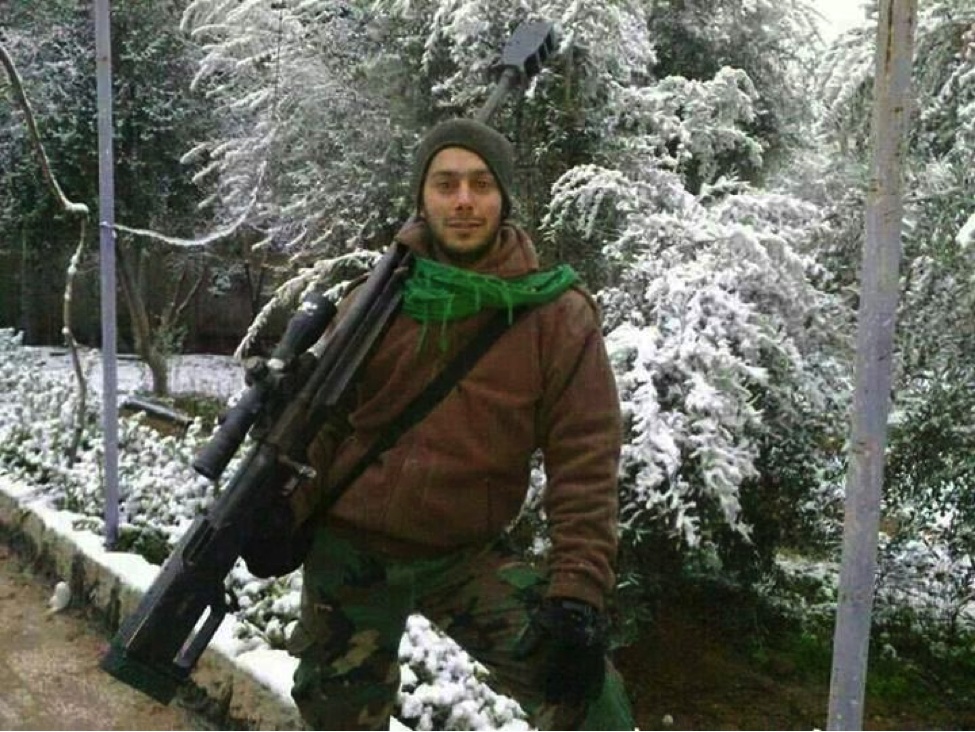
Figure 5: Hizballah’s Khadr Ahmed Matar, declared killed in Syria on December 2
0, is shown standing in the snow with the rifle.
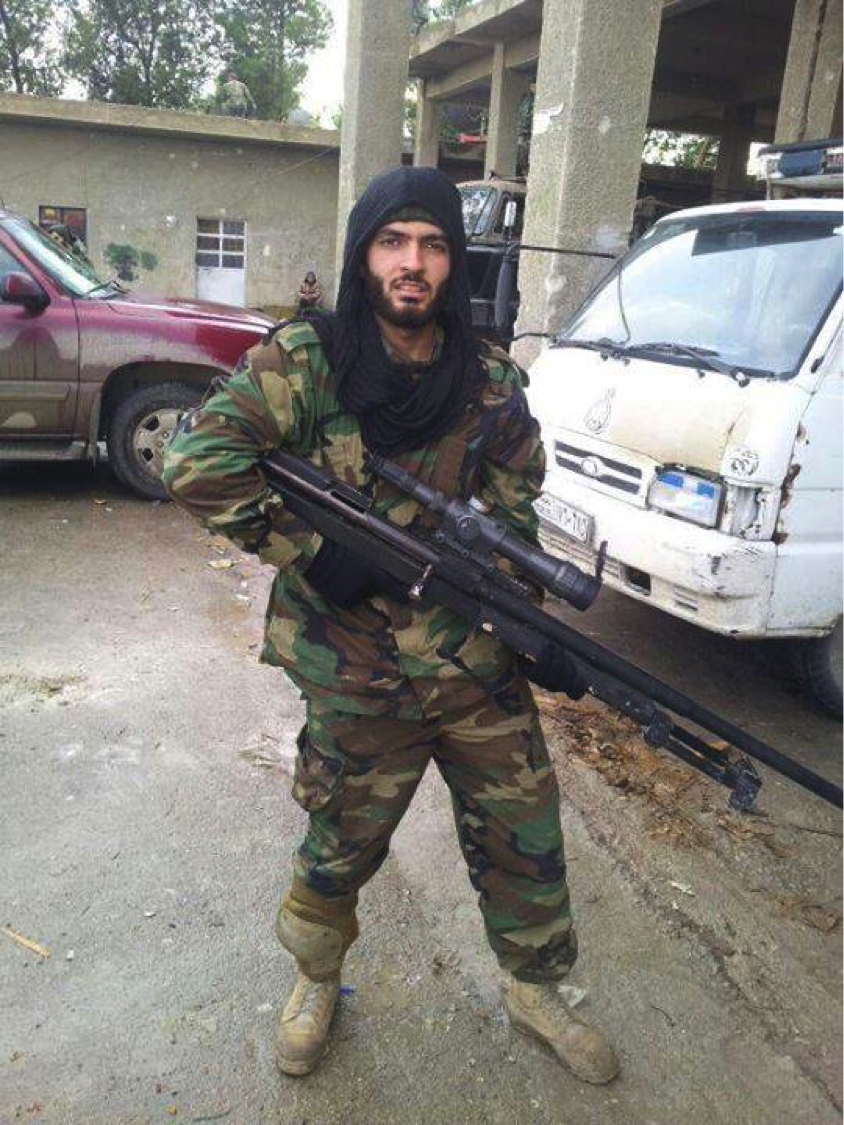
Figure 6: Qasim Ghamloush is shown holding the .50 caliber rifle. His death was announced by Hizballah on December 7, 2013.
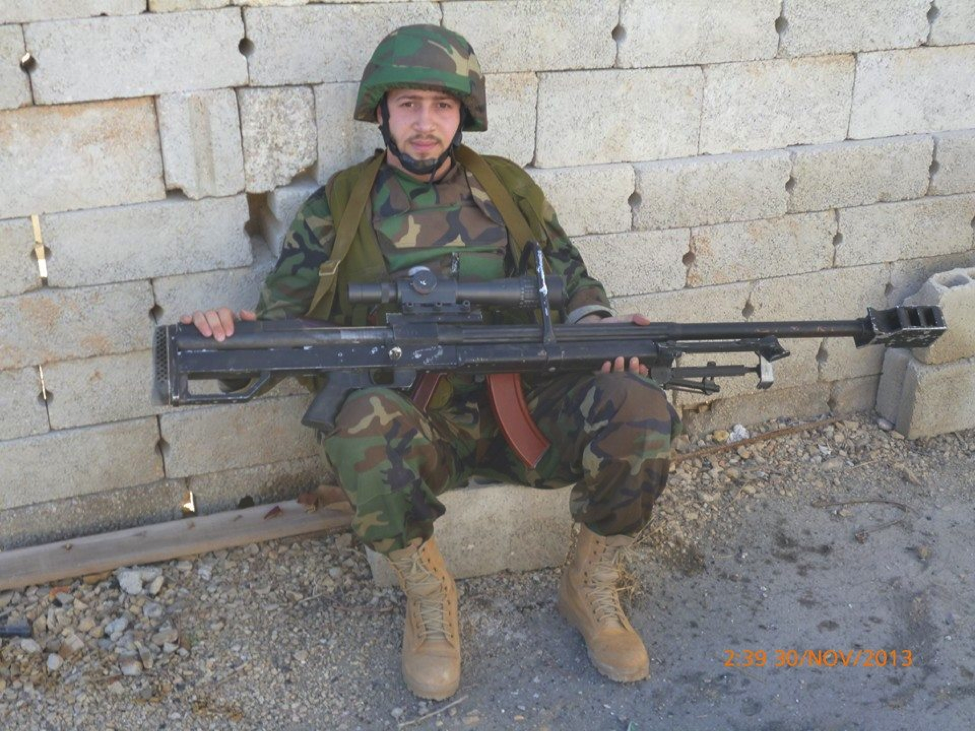
Figure 7: Ali Husayn Salah (A.K.A. Sheikh Hadi) is seen holding the rifle over his Kalashnikov-pattern weapon. Salah was also reported to have been killed in Syria on December 7, 2013.
Liwa’a al-Hamad:
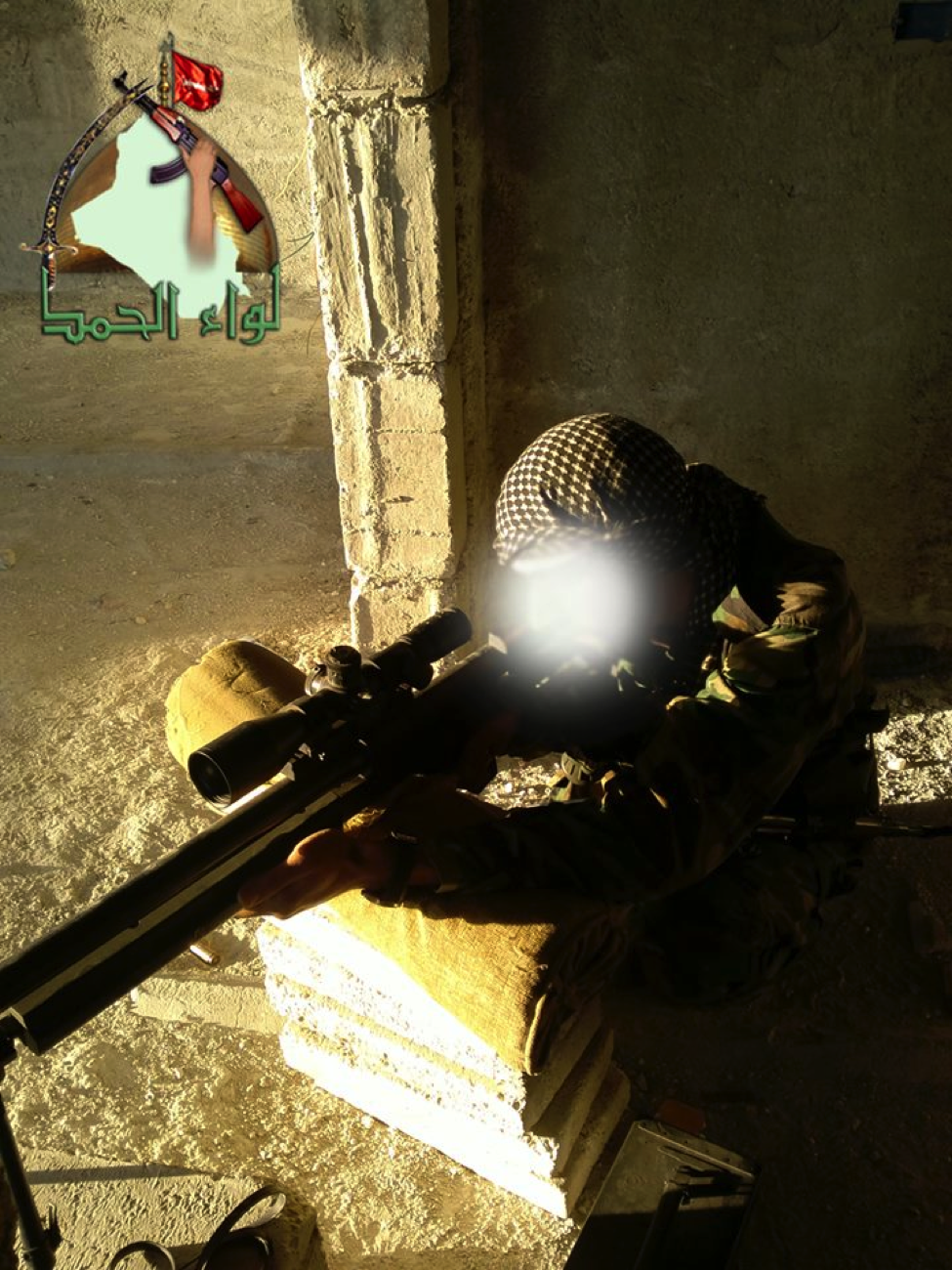
Figure 8: An October photo of a fighter from Liwa’a al-Hamad taking aim with the HS.50-type rifle.
The Badr Organization – Quwet al-Shahid Muhammed Baqir Sadr
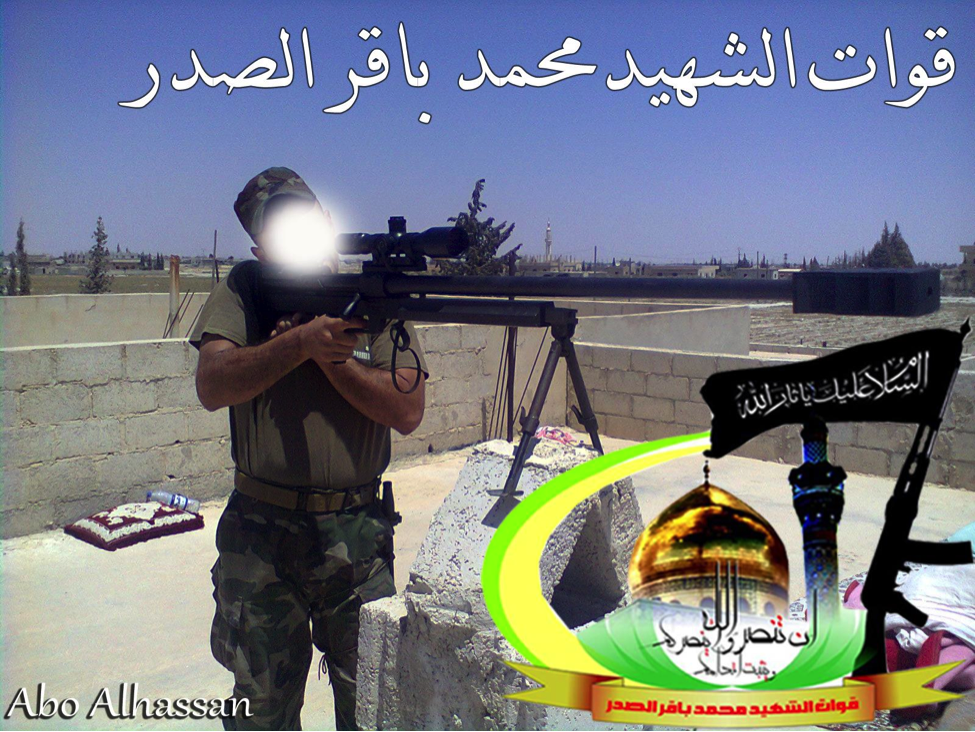
Figure 9: Following the announcement that the Badr Organization had created its own expeditionary force for Syria, this was one of the first photos they posted online.
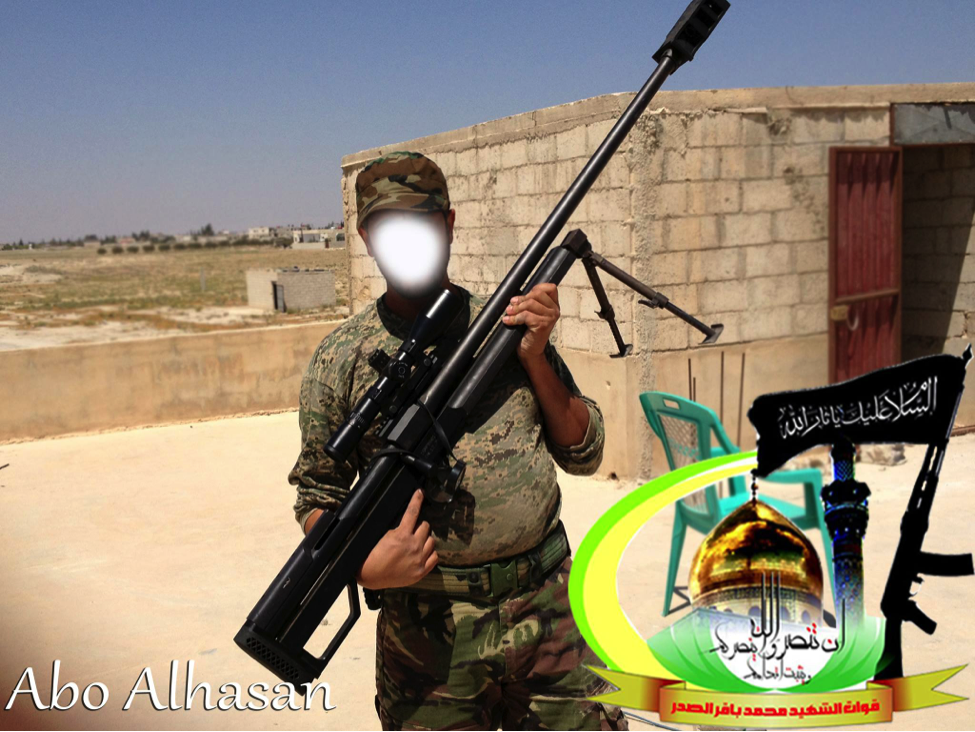
Figure 10: A Badr Organization-Quwet al-Shahid Muhammed Baqir al-Sadr is shown holding the HS. 50 type rifle.
Liwa’a ‘Ammar Ibn Yasir:
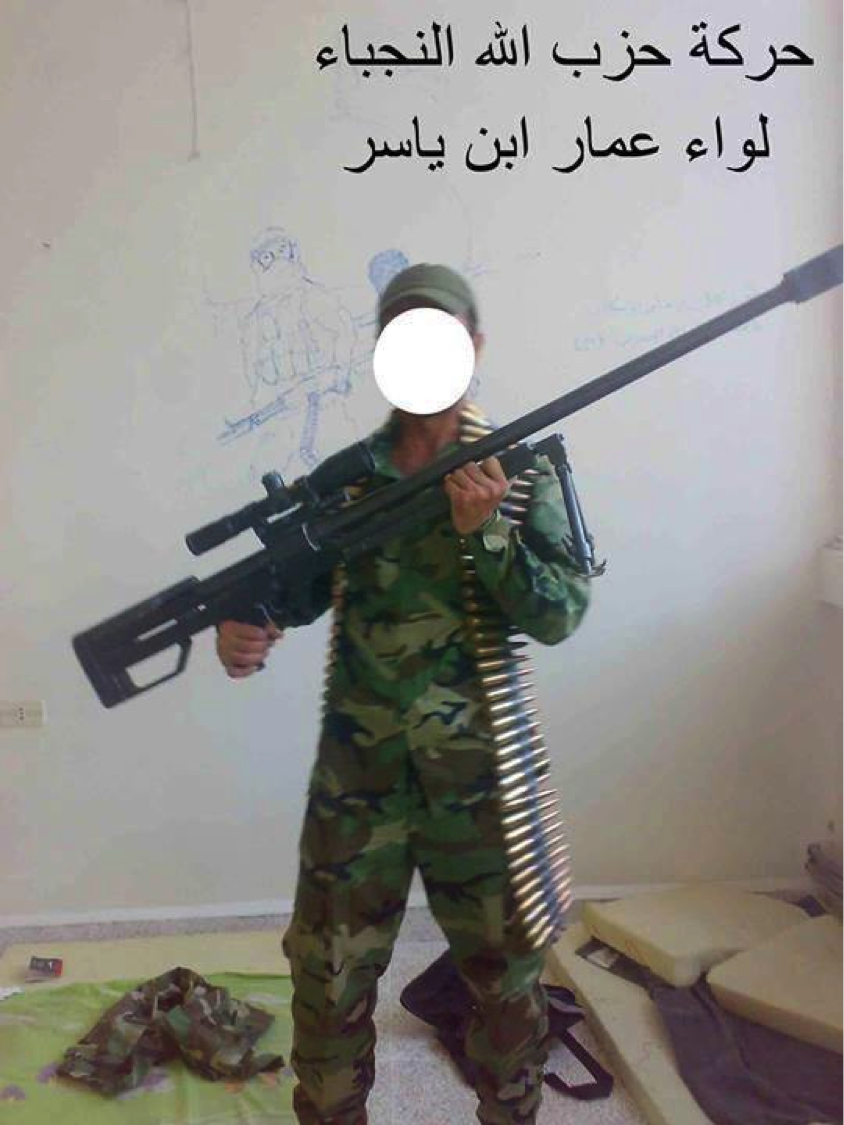
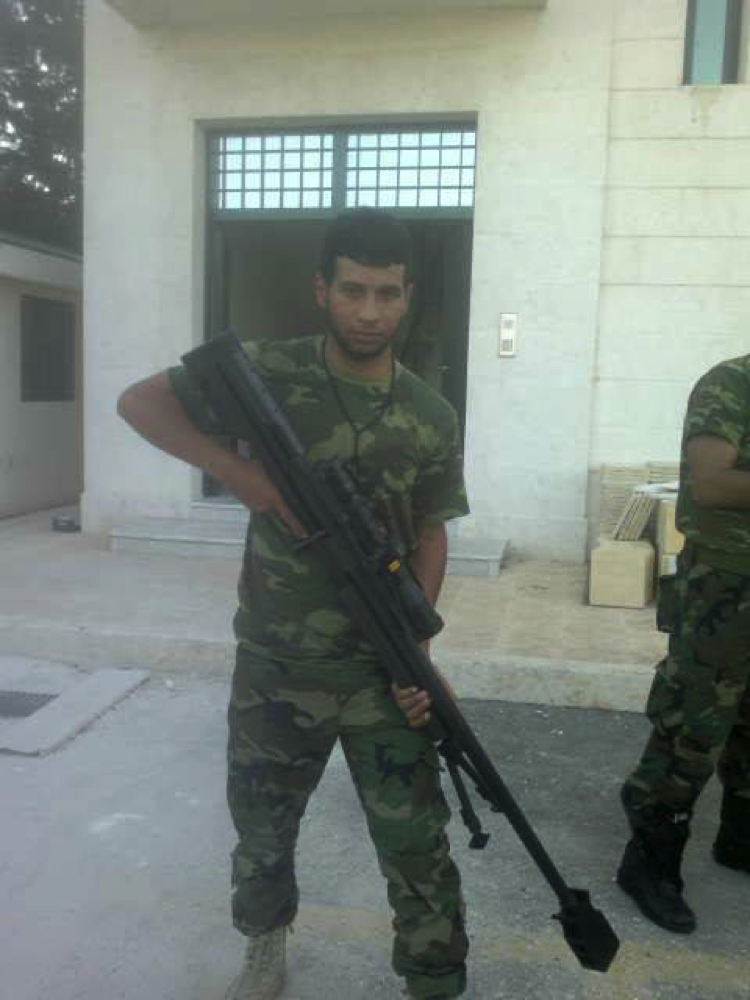
Figure 11: A commander from Liwa’a Ammar Ibn Yasir is seen holding the .50 caliber rifle.
Kata’ib Sayyid al-Shuhada:

Fighters from Other Groups:
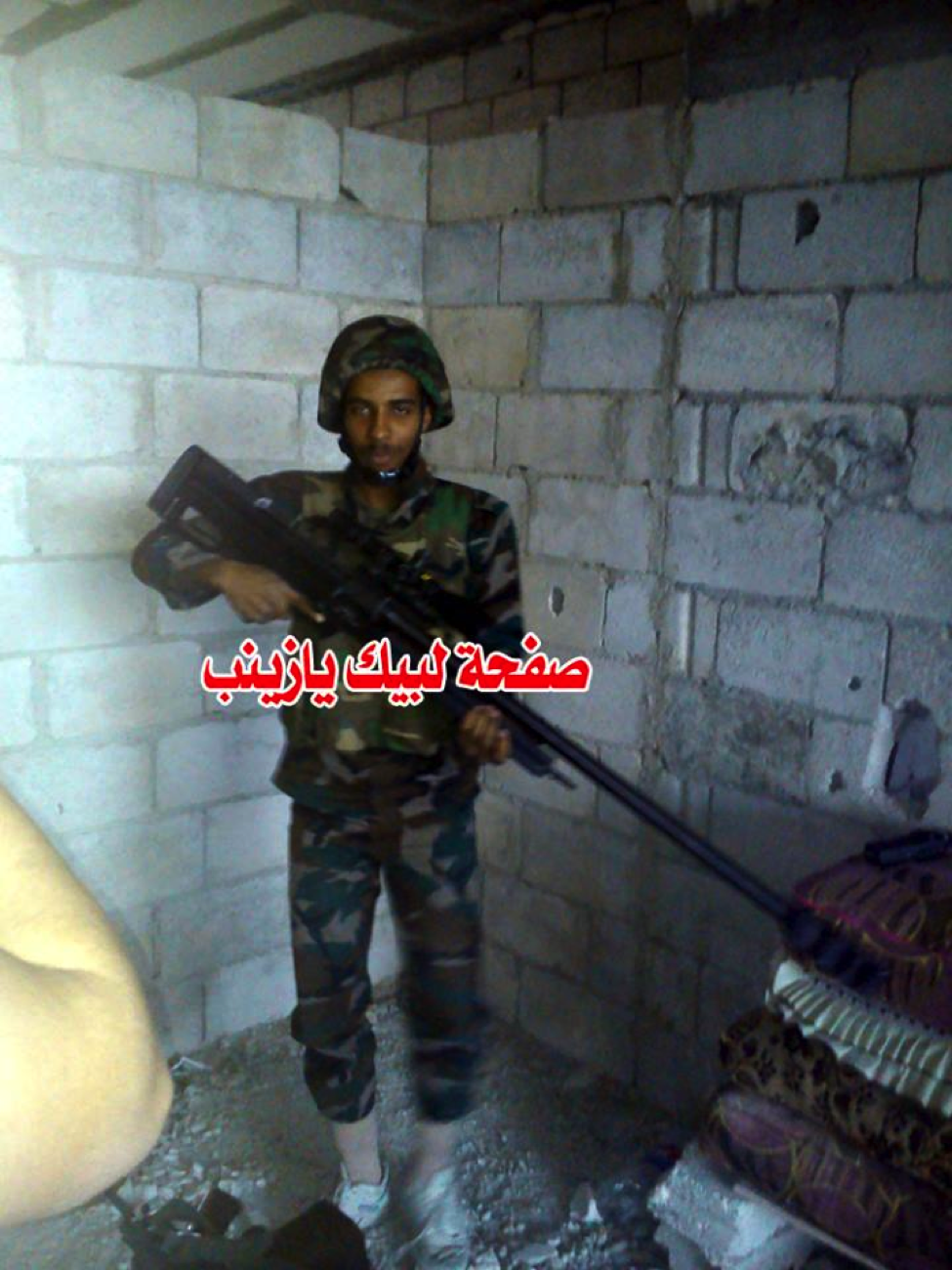
Figure 12: The Shia militia effort’s “first African martyr” (Muhammed Suleiman al-Kuwni) is shown holding the rifle.
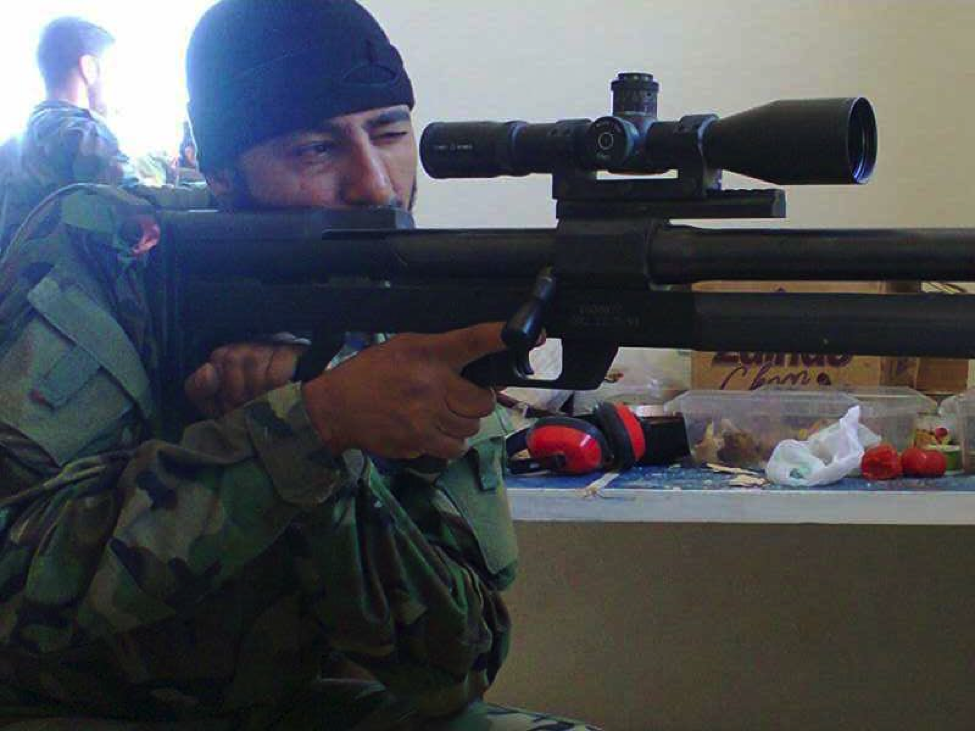
Figure 13: A fighter from an unnamed Shia Islamist militia (likely Liwa’a ‘Ammar Ibn Yasir) take aim with his rifle.
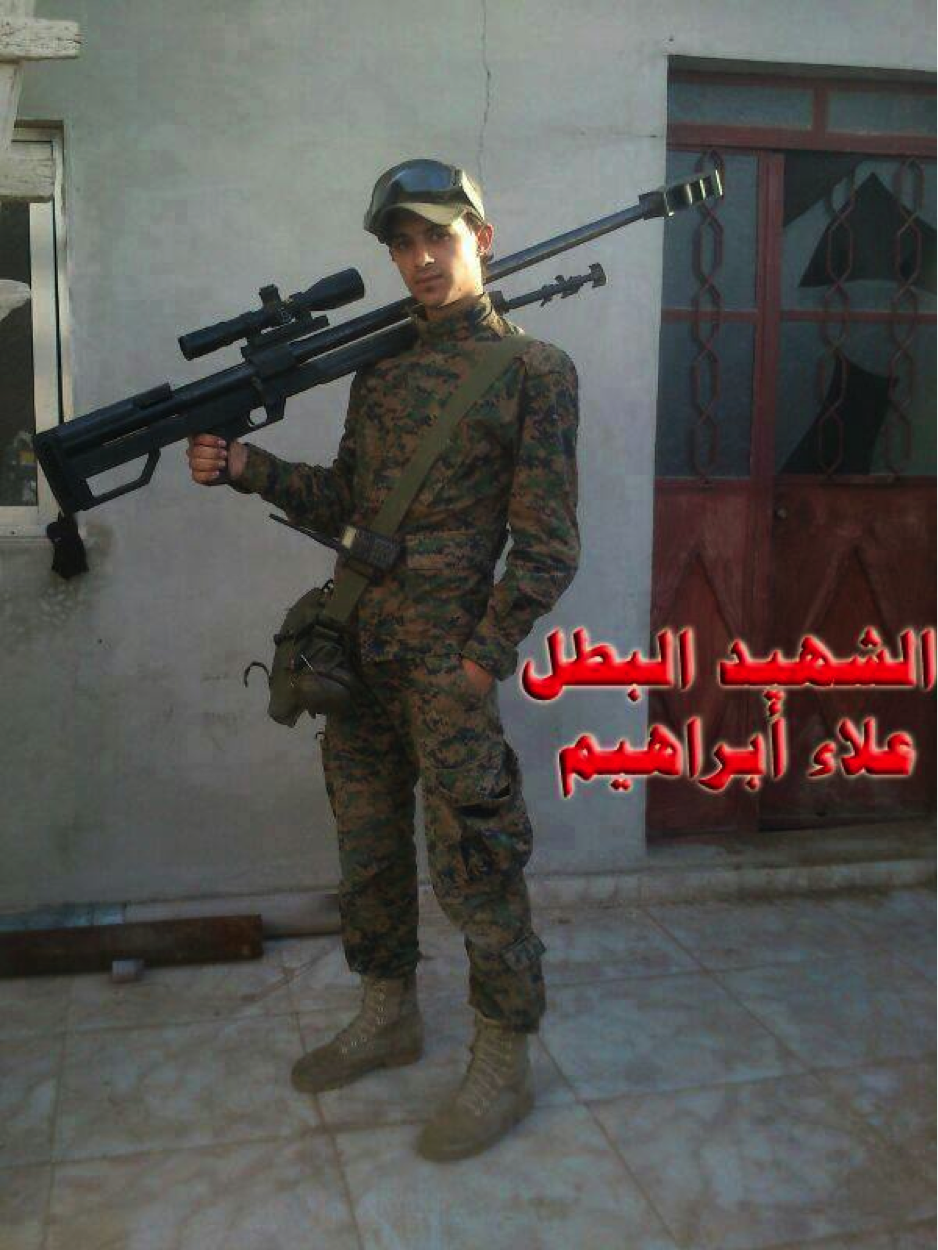
Figure 14: Alla’ Ibrahim (possibly from Liwa’a Zulfiqar), an Iraqi Shi’a fighter buried on November 30, 2013 holds the rifle over his shoulder.
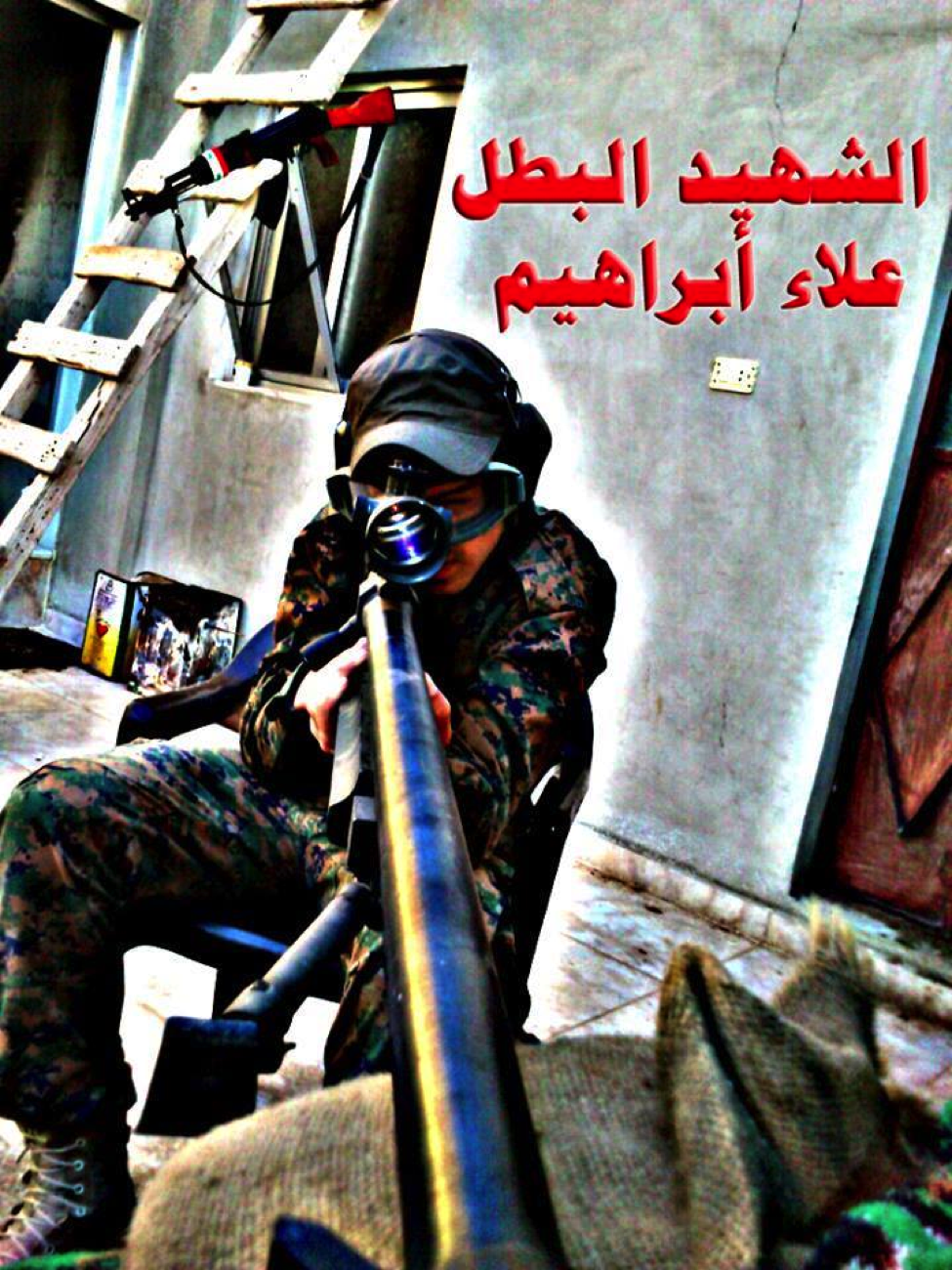
Figure 15: An edited shot of Alla’ Ibrahim shows him posting with the rifle.
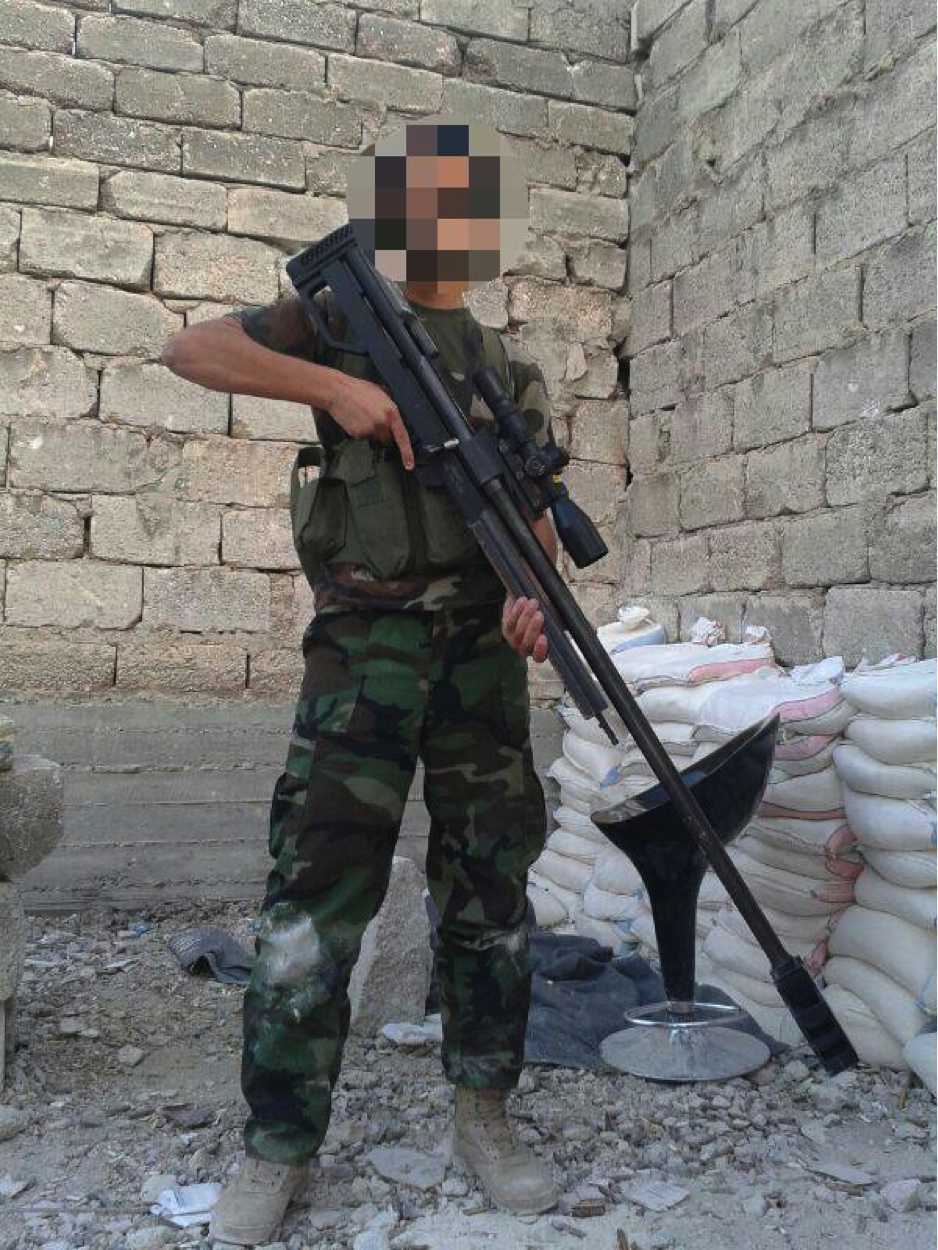
Figure 16: A Shia fighter from an unnamed militia group is shown with the HS. 50-type rifle.
[1] The Oryx Blog has an excellent post on HS. 50-type rifles in Syria: https://spioenkop.blogspot.com/2013/04/syria-and-her-hs50s.html. The post is from April 27, 2013 and pictures of Liwa’a Abu Fadl al-Abbas members with the rifle.
[2] See: https://www.telegraph.co.uk/news/worldnews/1542559/Iraqi-insurgents-using-Austrian-rifles-from-Iran.html
[3] See: https://brown-moses.blogspot.com/2013/04/anti-material-rifles-in-syria.html. See also: https://www.thefirearmblog.com/blog/2012/07/16/mysterious-iranian-50-cals-part-3/. This post by The Firearms Blog should also be read when assessing the rifle in question.
[4] See: https://www.facebook.com/permalink.php?story_fbid=477563188953409&id=174927625878471.
[5] See: https://www.dailytelegraph.com.au/news/opinion/taliban-remain-in-fear-of-lethal-strikes-writes-chris-masters/story-e6frezz0-1226504862496
